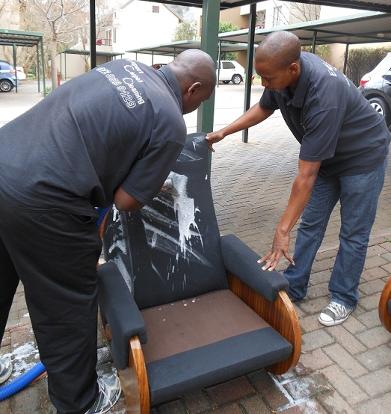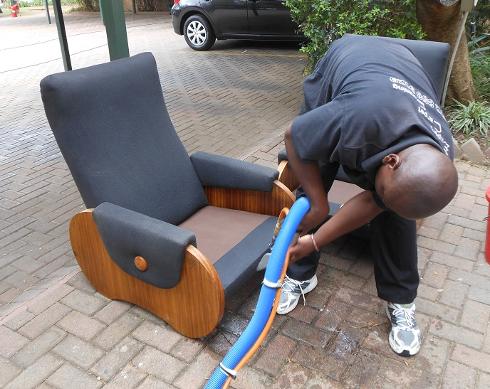Sign up for our Monthly Newsletter
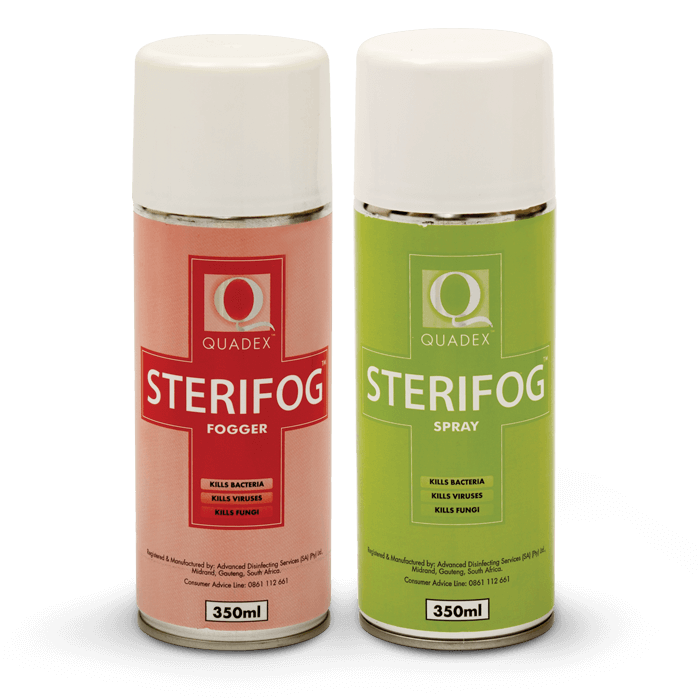
Order your high level disinfectant spray from us today.
350 ml Sterifog (plain or vanilla) @ R 120.00
Sterifog kills dust mites, bacteria, viruses, fungi, mildew, mold and odors.
- Sterifog has a long lasting residual killing effect, ideal for your home, office, industrial and medical facilities.
- Kills 99.9% of all microbes that cause illness and odors.
- Harmless to people and animals, safe to use in sensitive environments.
- Stops the spread of viruses such as flu
Deep Clean for new Baby
Having a clean home is extremely important when you bring a baby home, they are so new to the world that they can easily get sick and form allergies.
New parents typically don’t have a lot of time to clean their home, and it may be wise to get a professional carpet or window cleaning. The last thing you need is a visitor pointing out the health hazards of a dirty rug / carpet.
Your cleaning can be combined with a disinfectant service to ensure no bacteria is left on any of the baby’s furniture, including car seats, cots and prams. Or you might feel the need to order a full house clean and get rid of all the dust so the baby is not exposed to such allergens.

When using a car chair, cot or any other baby appliance for the next baby, they should also be professionally steam cleaned and disinfectant as a precaution.
You have so much to do already, let Expert Cleaning Services take care of the cleaning for you. Call us today on :
0861 800 300
A Clean Home makes a healthy home
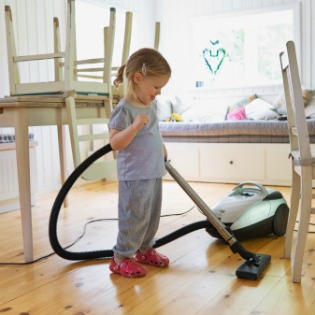
It's no fun being sick, or caring for a sick baby, or worst of all trying to do both at once. Head off illness by practicing simple hygiene and cleaning routines. A healthy home can be easier to achieve than you think.
1. MAKE HAND WASHING A PRIORITY FOR EVERYONE
Family members, visitors, and every one entering the house should wash their hands frequently: Before eating or preparing food, after using the bathroom, after coming in from outside, after playing with or caring for pets, while caring for someone who is sick, and so on. Make sure soap, water, and clean towels are always available.
2. BANISH FOOD-BORNE ILLNESSES
For adults or older children, a food-borne illness is unpleasant, but usually not dangerous. Not so for babies and toddlers, whose immune systems aren’t as ready to tackle tough bacteria. For everyone’s sake, keep bugs at bay with the following tips:
· Wash your hands in hot, soapy water before, during, and after you prepare food. Be especially meticulous when you handle raw meat, poultry, fish, or eggs.
· Stock up on cutting boards — keep one for produce and another for proteins like meat and fish. Put them in the dishwasher after each use or scrub with hot, soapy water. And replace them when they get scarred and pitted (bacteria love to make themselves at home in those crevices).
· Keep hot foods hot and cold foods cold.
· Wipe surfaces (counter tops, handles, doorknobs, and so on) with disinfectant frequently, and wash kitchen rags, sponges, and towels regularly.
· Avoid cross-contamination — don’t place cooked foods in a dish that previously held raw foods because the bacteria from the raw meat (or veggies) can transfer onto the cooked burgers (or veggies).·
3. SLEEP CLEANER
Since you spend most of the night in your bed (or hope to!), you’ll want that environment to be a healthy one. Wash sheets once a week in warm or hot water — more often if anyone’s ill. Crib sheets need more frequent changing, since they’re prone to be covered with all manner of leaks, spills, dribbles, and drool. If you have dogs or cats, get them their own cozy beds and discourage them from sharing yours (or your child’s). Their furry coats can harbor germs, allergens, and even fleas — none of which make for good bedfellows for your family.
Even if your mattress looks clean, it could still be filled with pests, their feces, body fluids and dangerous bacteria. Vacuum you mattress at least once a week and have your mattress deep cleaned at least once a year.
4. STOP illness FROM SPREADING
As a rule, keep personal items (toothbrushes, towels) personal — color code them, clean them regularly, and store them far enough apart from one another (at least an inch for toothbrushes) so that germs don’t get passed back and forth. Pay extra attention to healthy home routines when anyone in your household is ill: Be (even more) compulsive about hand washing, put your washing machine in overdrive, stock up on tissues, wipe down bathroom surfaces more frequently, and replace toothbrushes.
5. LEAVE SHOES BY THE WELCOME MAT
Ask family members and visitors to remove their shoes before coming inside — especially if your house is home to a crawling baby. That way, they’re leaving dirt (and bacteria, and choking hazards) at the door, not on the floors where your baby spends her days.
6. PUT ALLERGENS ON ALERT
If anyone in your house suffers from airborne allergies, make your home healthier by reducing allergens, such as dust mites, mold, and pet dander.
· Consider buying a vacuum cleaner with a HEPA (high-efficiency particulate arresting) filter, which will trap dust mites and other allergens. Also install high-quality filters on your furnace and air-conditioning units and replace them frequently.
· If you have pets, talk with your allergist about the best ways to minimize their effect. Sometimes keeping them out of certain rooms (such as your child’s bedroom) can help.
· Wash bedding once a week.
· Cut back on stuffed animals (dust mites love ’em almost as much as your child does), saving only a few favorites. Bathe those chosen few (with a gentle spin in the washing machine) weekly, or freeze out dust mites by stashing stuffies in the freezer overnight.
· If your house is damp, run a dehumidifier to chase mold away. Vent steam from the kitchen, laundry, and bathroom too (by opening windows or using exhaust fans).
7. POPULATE WITH PLANTS
Bring nature indoors and your baby's lungs will thank you. Air-cleaning plants don't just make your rooms look pretty, they detox your home by removing pollutants like ammonia (found in cleaning products) and formaldehyde (found in furniture). Rather than scattering single plants around, create group displays in each room for maximum air-cleaning effect.
Mattress Cleaning Special June 2017
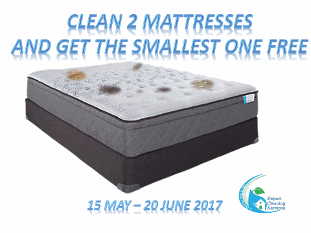
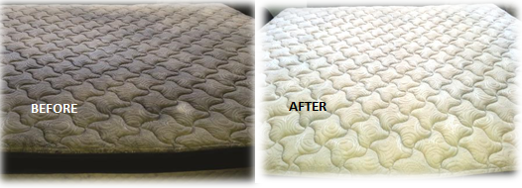
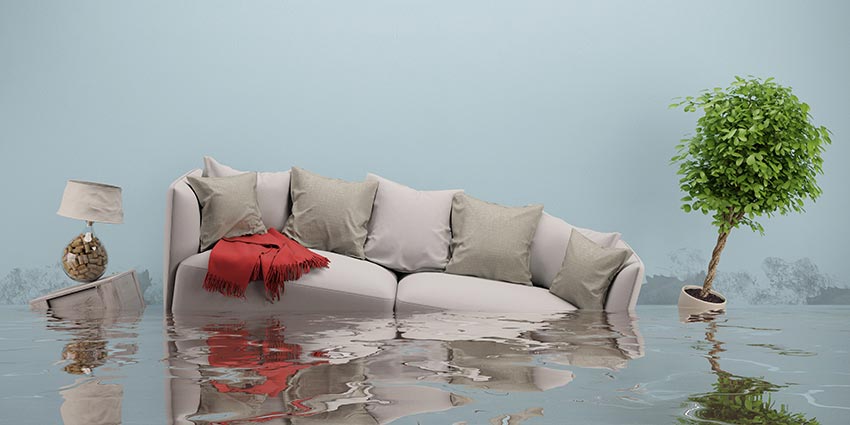
First 24 Hours after Flood
Flood water, big or small, effect your home in 3 different ways.
1. Water damage Materials, Skirting boards will disintegrate if they remain wet for too long, wood / laminate floors can swells, electrical parts can short out or malfunction and cause shocks.
2. Mud, silt and unknown contaminants in the water get everything dirty and create a health hazard for you and your family.
3. Dampness promotes the growth of mould and mildew, a fungus that can grow on everything as well as release spores in the air contaminating it.
Apart from the stress and Shock that is caused by floods, most of us are not sure what to do or have to handle the situation. Here's a few tips what we've learned over the years dealing with these disasters.
Whether a flood is caused by ground water, falling water or home system malfunction, there are some best practices you'll need to employ within the first 24 hours after the flood to ensure the safety of your home and family and give yourself the best outcome possible with your insurance company.
Avoid Additional risk
If the flood was serious enough for you to leave your home, be sure you stay safe upon your return. Check for any visible structural damage, such as warping, loosened or cracked foundation elements, cracks, and holes before entering the home and contact utility companies if you suspect damage to water, gas, electric, and sewer lines.
In addition, it’s important to have a working flashlight and turn off all water and electrical sources within the home. Even if the power isn’t operational, it’s a good idea to go to your fuse box and turn off the main, plus all of the individual fuse connections. That way, if the power is reactivated, you’re not at risk for mixing standing water and electricity.
Take Pictures:
Before you remove any water or make any repairs, fully document the damage for your insurer by taking photos or video.
Call your Insurance Company:
Advise your insurance representative of the state of your home and any repairs you intend to do immediately.
Document the damage and conversation at every stage and get their permission to go ahead with any flood extraction and or repairs.
Act Fast:
Advise Make sure you get the water extracted as soon as possible, at least within 24 hours by a professional carpet cleaning company. Most companies also have drying equipment they can rent out to speed up the drying time. If you'd like to save any items, carpets, beds, etc., from flood damage, speed is of the essence here.
Putting off the extraction or letting the carpet dry by itself exposes the items to Mould and permanent damage. Mould can develop quicker than we realize, within 24-48 hours.
Emergency Flood Extraction
If you find yourself in a situation where you need an emergency flood extraction, contact Expert Cleaning services on one of the following numbers and an emergency team will be send out to assi
Audrey: 061 077 6201 Greg: 083 641 5629
Joel: 072 072 0225 Office: 072 858 9129
5 Surprising Reasons Why Spring Cleaning is Good For You
It's that time of the year again to start thinking about spring cleaning, which means some serious de-cluttering, reorganization, scrubbing and polishing.
Whether you love it or hate it, there's no denying that a good spring clean is a worthwhile exercise. But did you know that it can also benefit your health and well-being? Here are five reasons why clearing out those closets and grabbing the polish are actually good for you. Let the cleaning commence!
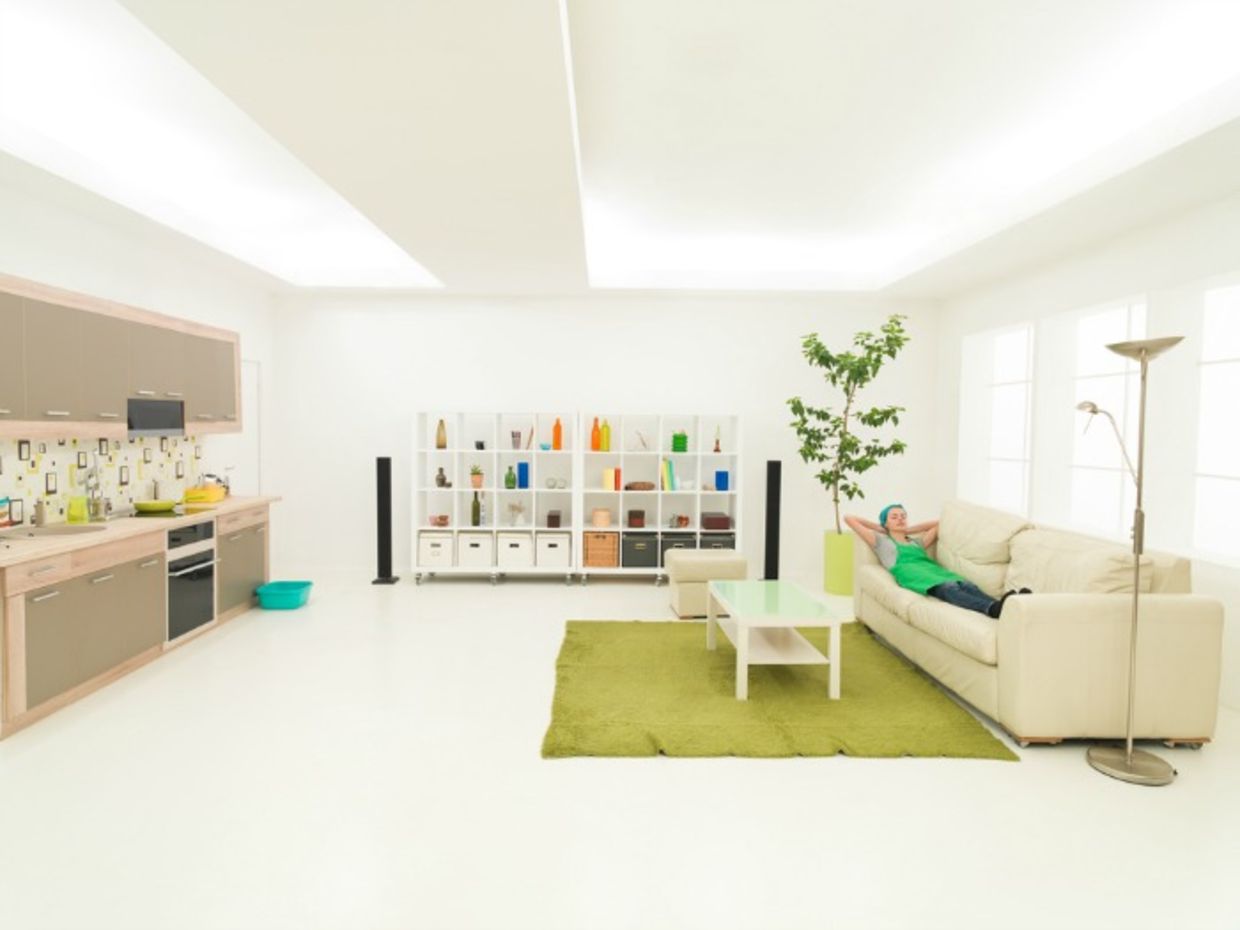
1. SPRING CLEANING INCREASES PRODUCTIVITY
Making the effort to declutter and organize your home or office can save you tons of time looking for or replacing lost items in the future. Organization Experts say that this makes you more productive, while the cleaning process itself can increase energy levels.
HANDY TIP: Learn to let go. If you haven't used something since the last spring clean, it might be time to say goodbye.
2. SPRING CLEANING IS HEALTHY
A good spring clean can help you avoid allergy symptoms, according to a study by the American College of Allergy, Asthma and Immunology (ACAAI). Removing allergens from the home can make you feel healthier, especially at a time when allergies are rife.
HANDY TIP: Ask for help moving big pieces of furniture or climbing up ladders when going for those hard-to-reach spots.
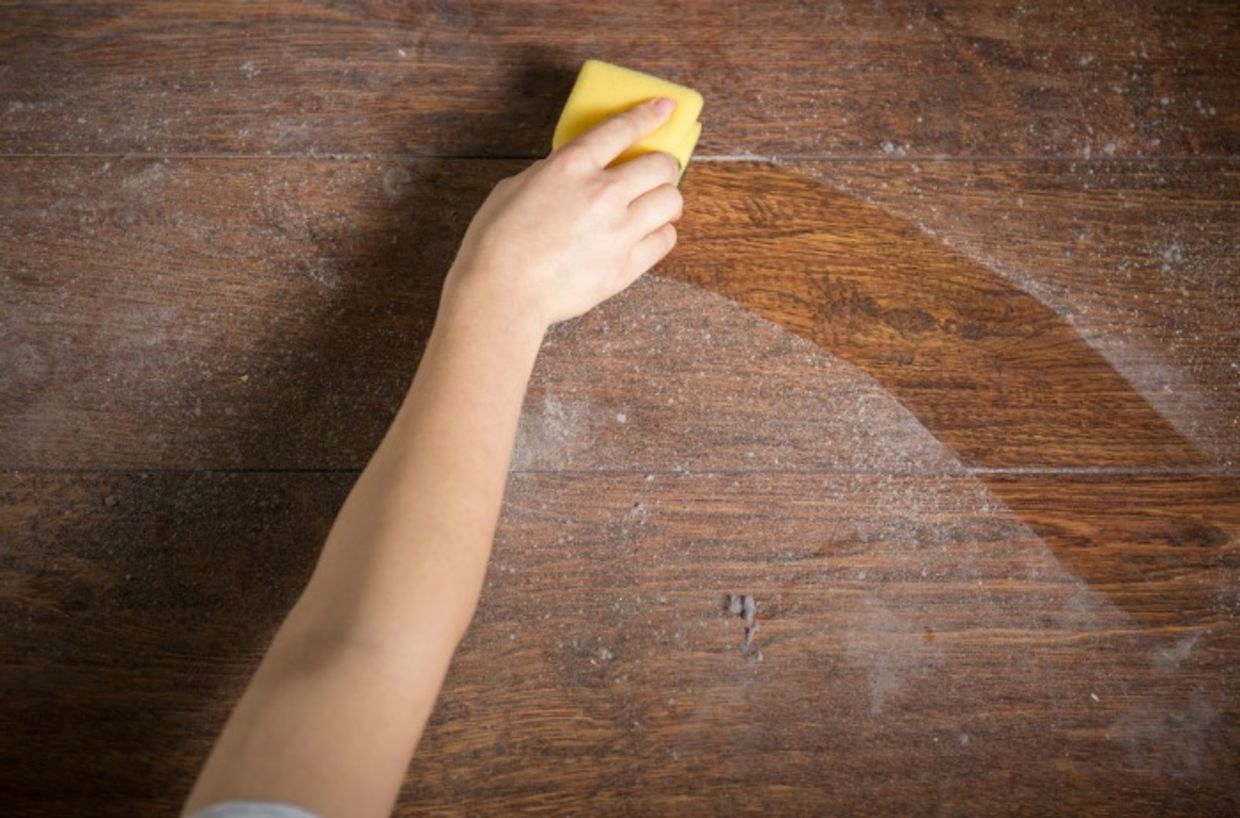
3. SPRING CLEANING MAKES YOU HAPPY
Taking the time to thoroughly clean and maintain a tidy home makes people happier,studies have shown. The act of cleaning provides a sense of satisfaction, which in turn can put you in a good mood.
HANDY TIP: Put on some of your favorite tunes while cleaning to make it even more fun.
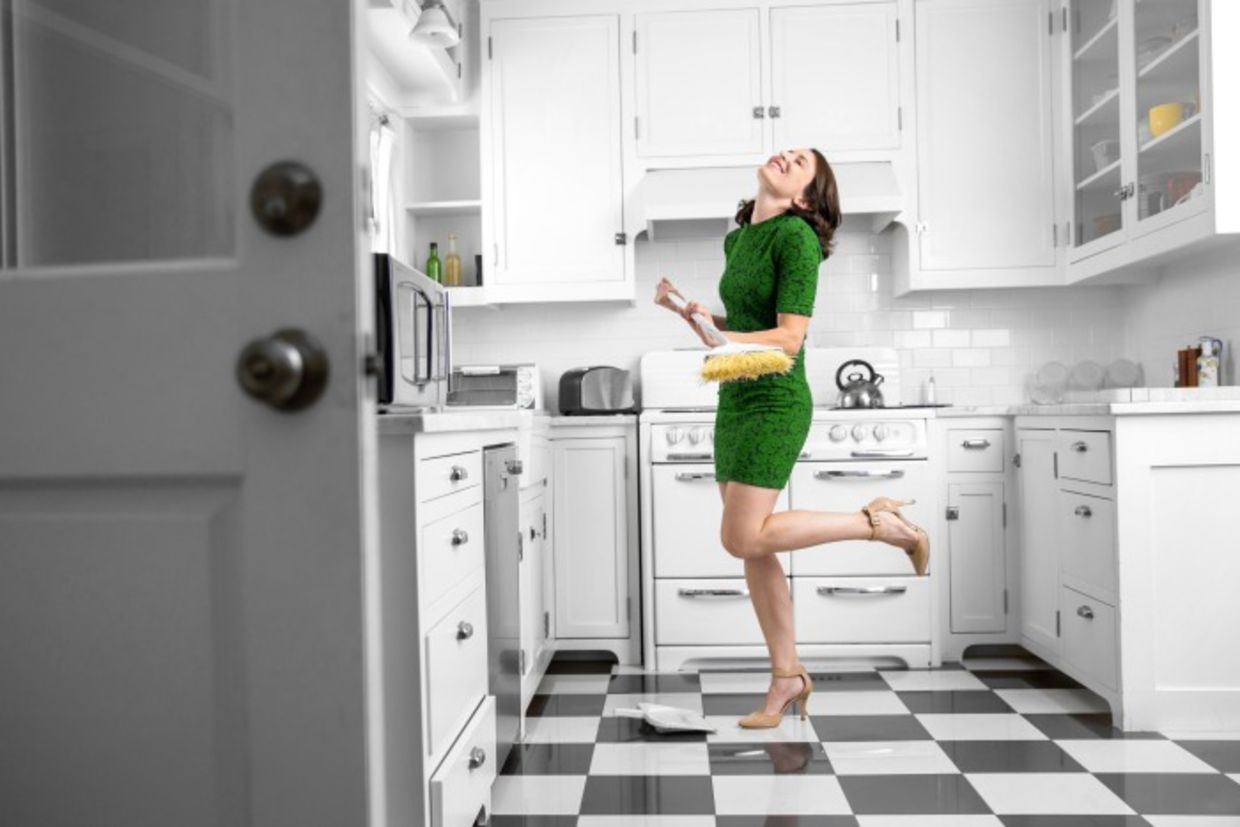
4. SPRING CLEANING REDUCES STRESS
Cleaning and organizing your personal spaces lets you enjoy a tidier and more organized environment and this can relive stress. Levels of stress can also be reduced during the act itself as cleaning is considered to be therapeutic.
HANDY TIP: Be realistic. If it's all getting too much, take a break. It's not a race after all.
5. SPRING CLEANING HELPS YOU FOCUS
Those who make a point of clearing out the clutter once in a while are able to free up the brain for more essential decision-making, according to a study carried out by the founder of America's Anxiety Disorder Center. A thorough clean helps to clear your mind of things that need to be done around the house and makes it easier to focus on other more important things.
HANDY TIP: Concentrate on one room at a time to make sure you get the job done properly.
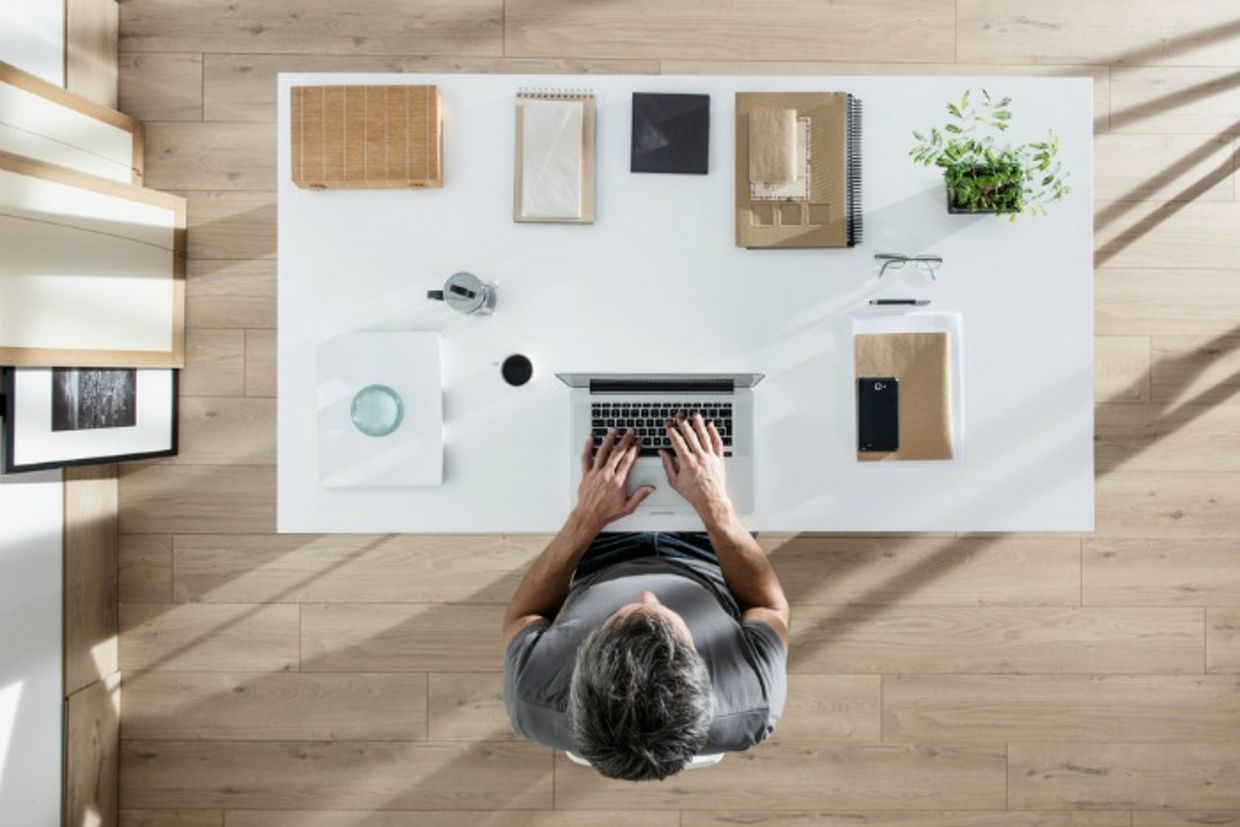
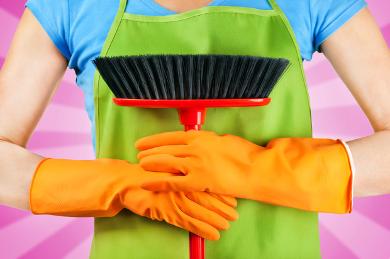
Others provide a more logical scientific explanation as to why we spring clean. The truth, as we will see, may be somewhere between the two. In English, the term ‘spring clean’ dates to around 1855-1860, but the act of spring cleaning began far back into the distant past. It’s a cultural tradition with advocates all over the world.
Shaking the house clean in Iran
Iran celebrates their New Year with festivals, customs, rituals and symbolism
that date back before the country’s current Islamic culture. The day of the
vernal equinox, 21 March, is the first day of the solar cycle, when there are
more minutes of daylight per day than there are of darkness. This is the day
when Iranians celebrate Now Rouz (Persian New Year). For two weeks, Iranians
adorn their streets and houses with symbols of burning and planting to signify
renewal. It’s a time of much optimism for the new season; a time for refreshing
and reinvigorating life, a process that is perhaps most apparent in the
tradition of khooneh takouni - ‘shaking the house’ - a custom that lives up to
its name.
Khooneh takouni is a vigorous spring cleaning ritual. Iranians buy new clothes
to wear and every corner of the family home is scoured and cleaned; nothing is
missed. The scent of flowers in vases clears the air of stale odours and every
household item from the rugs, curtains, bedding, floors, ceilings, windows,
cupboards and shelves down to the last ornament receives a thorough cleaning.
Once the house has been shaken, the Now Rouz can start and spring can
arrive once more.
Cleansing the home at Passover
Another ritual that could identify the beginnings of spring cleaning is the
ancient Jewish practice of thoroughly cleansing the home before the spring-time
memorial feast of Passover. Passover (Pesach in Hebrew) is among the most
important festivals in the Jewish year. It is a time when Jewish people
remember how the children of Israel escaped from slavery imposed by the
Pharoah, when Moses led them out of Egypt over 3000 years ago. Jewish people
believe that Moses warned the Pharaoh that God would send devastating plagues
if he did not let his people go. There were ten plagues culminating in the
death of the first born. The festival is called Passover because before
the final plague began, God told Moses his people should mark their doorposts
with lamb's blood. God would then know which houses to 'pass over' and spare
them from the plague.
Eventually the plagues achieved their aim and the Pharaoh told Moses that he
and the Israelites must leave at once. The Jewish people left Egypt so quickly
that their bread did not have time to rise. To this day, during Passover,
Jewish people eat unleavened bread called Matzah in remembrance of the rapid
escape from Egypt. There are strict prohibitions against eating or drinking
anything which may have been leavened or fermented with yeast. In fact,
Jews must clean their homes of even the smallest remnants of chametz (leavened
food) for the length of the holiday. They do this by "spring
cleaning" the home. The cleaning is followed by a traditional hunt for
chametz crumbs by candlelight (called bedikat chametz) on the evening before
Passover.
Sweeping away bad luck in China
Another contender in our search for the origin of spring cleaning can be found in China. The Chinese believe spring cleaning in preparation for the New Year brings good fortune. At the end of the year, Chinese homes are cleaned from top to bottom. The Chinese sweep floors and wash and clean their homes to remove any bad luck and misfortune that may have gathered there during the year and be lingering ready to continue into the next. Once the homes are clean and the floors swept, the Chinese welcome and preserve good fortune by refraining from sweeping for a number of days at the start of the new year. The act is believed to prevent them sweeping away any good fortune that came into the house at the turn of the year.
Ancient man cleaning for survival
Tradition and rituals aside, is there a scientific reason for cleaning in spring? Does the spring cleaning habit predate all cultures, with a trigger found in our biological make up? Some people think so. During the shorter days of winter, when exposure to daylight is limited, our pineal gland produces melatonin -the hormone that induces sleepiness. Ancient humans’ lack of exposure to light would have led their bodies and minds to become slower, more subdued. As the days grew longer in March, the increased exposure to light caused melatonin levels to drop and energy levels to recover. During the long winter’s slumber, dirt will have gathered in the huts and caves that our ancestors called home. As spring brought warmer temperatures, bacteria would begin to grow. With vitality restored, ancient man took to spring cleaning, a natural remedy to prevent infection and disease.
It just makes sense
Ultimately, spring is a great time to clean our homes and always has been.
Before central heating, people kept their houses shut tight against the
cold of winter. Homes were heated with coal, oil and wood and lit with candles.
It’s a lifestyle that produces a lot of smoke and ash. Spring, with its warmer
days and lighter evening was, and still is, an opportunity to make a dwelling
where the smell of stale smoke hung from the walls, fresh again. Windows and
doors can be opened, so dust can be cleared outside and washed cloth and linen
will dry quicker now that is can be hung in the breeze.
Could it be that so many different cultures embark on rituals and celebrations
that involve spring cleaning because, this time of year is simply the best time
to refresh and clean your home?
Get 20% off all Mattress and Rug Cleaning !
When you clean 2 or more Mattresses or Rugs
5 - 25 August 2016 only!
Book now to avoid disappointment. Tel: 011 026 8408
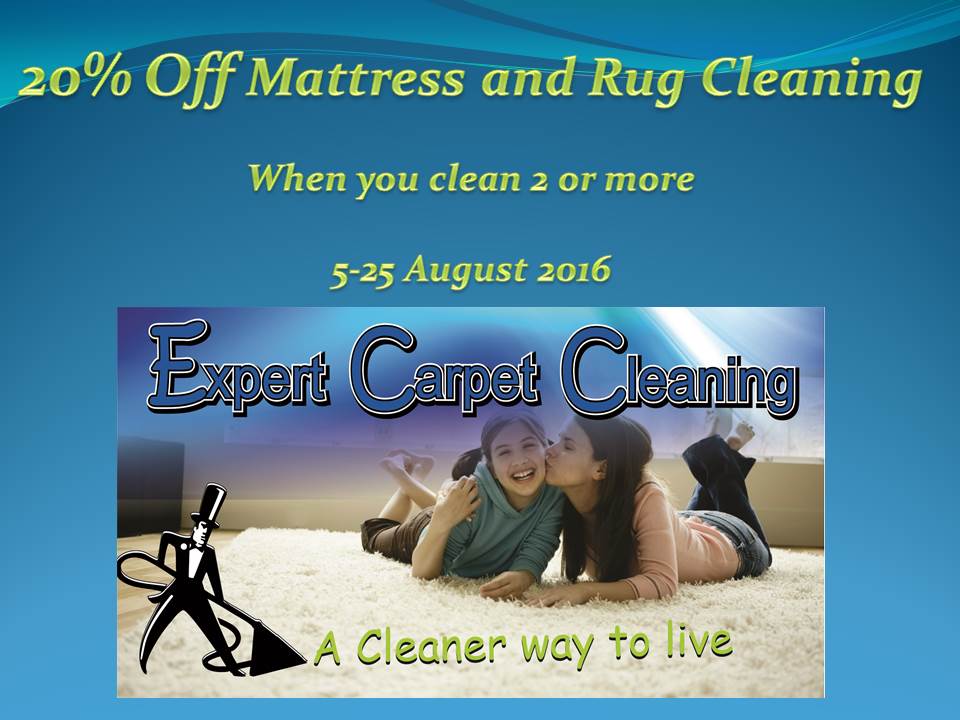
Clean any 2 Mattresses and get the cheapest one absolutely free!
7 - 27 July 2016 only!
Book now to avoid disappointment.
Tel: 011 026 8408
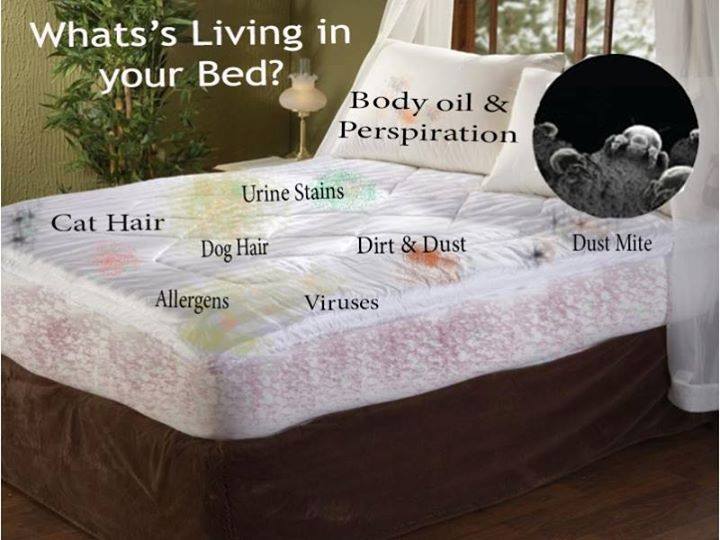
How to Keep your House Warmer this Winter
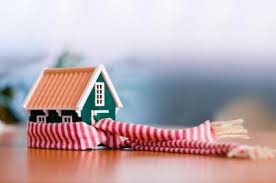
There’s a chill in the air and it’s time to prepare your home for a cold winter. If you are like most homeowners, you want to keep your house warm while keeping your heating cost down.
Utilizing the tips below will not only make sure you’re warm and comfortable all winter long but can also save you money on your heating bills.
Add layers to your floors. Un-insulated floors can account for up to 10% of a home’s heat loss. Carpets and rugs were created for a reason — to keep rooms warmer. They’re far better at trapping heat than your creaky wood floors and stone cold tiles. Add a rug or roll of carpet to your floor in the winter, and you’ll notice a difference in warmth and cosines immediately.
Let sunlight in during the day. Once the sun is up, you want to capture as much of that free heat as possible. Even on cold days, the sun is still warm. So before you leave the house for the day, open up those curtains and let the light shine in.
Keep curtains closed at night. Once the sun goes down, keep all that heat from leaving through the windows by closing the drapes. Use heavy fabrics or layered curtains over the window to keep out draughts.
Mind your wood-burning fireplaces. While they’re romantic on a chilly evening, lighting a fire is terribly inefficient for the rest of your home. It’s warm and toasty right by the roaring flames, but for all that heat being exhausted up through the fireplace, cold air is being pulled into the house.
Take a look at your ceiling fans. If you have ceiling fans in your home, they may be sitting needlessly dormant during the winter months. Many fans have a “winter” setting, which reverses the fan so that it moves clockwise vs. counterclockwise. Since heat rises, the clockwise-spinning fan will push the heat back down into your rooms versus being trapped up at the ceilings.
Seal Window and doors. Buy strips of self-stick rubber weather sealing at your local DIY store. Cut long strips to fit the window, then
peel and stick to the frame to close any gaps and keep out draughts.
- Keep windows closed and sealed
- Dress warm, layers, hats, turtle necks, slippers and warm dressing gowns are your friends this winter
- Exercise: Moving around produce body heat
- Use Rugs and carpet rolls on tile and wooden floors
- Hot water bottles, keeping it near the foot of the bed will help you fall asleep when it's cold
- Make yourself a hot drink
- Close off any unused rooms, the closed door makes that room another barrier between you and frigid outdoors
- Leave the oven door open after baking
- Light a candle, it makes a difference
- Use smaller rooms
Simple facts about Bacteria
It is our responsibility to educate ourselves as best we can on what bacteria is and how we can clean for health.
Some of the more common (harmful) types found in homes are:
E. coli: Contact with fecal waste, then improper hand washing before eating, preparing food or touching your mouth.
C. Botulinium: Cause of botulism which can be a fatal food-borne illness. Found in the soil and on fresh food surfaces.
Clostridium Perfringens: Can be tracked in from soil outdoors. If ingested, it causes diarrhea and abdominal pain.
Staphylococcus: Staph can be found just about anywhere including hair, skin, nasal areas, throat, textiles and home surfaces.
Salmonella: Can be carried into the home on beef, poultry, milk, eggs and vegetables. Improper hand washing and food handling methods allow it to spread to other surfaces.
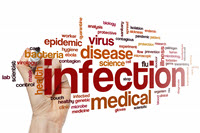
Bacteria Reproduction Facts
- Bacteria reproduce by dividing. Once the cell reaches its maximum size it starts to come together in the middle and eventually breaks in two. This process can take 15 to 30 minutes.
- In just 5 hours, one bacterium can turn into over 1 million bacteria.
- Since you would rarely start with just 1 bacterium on any given surface, bacteria can spread into millions and billions of bacteria very quickly.
How Bacteria Spread
A bacterium doesn't spread on its own. Here are some ways bacteria find their way onto other surfaces:
- People are carriers of bacteria and can pass the bacteria to others in a variety of ways.
- They can travel through the air when someone sneezes.
- We deposit them on objects we touch, so bacteria can literally be anywhere. Pay particular attention to "touch points" like door knobs, telephones and TV remotes when cleaning and disinfecting.
- Animals and insects can carry bacteria.
- Carried into homes on food products.
Methods of Killing Bacteria
- Heat - this method can include sterilization (steam under pressure), moist heat (autoclaves), boiling, and dry heat (hot air sterilization).
- Cold - cold doesn't actually kill bacteria, but it inhibits the growth.
- Direct sunlight or ultraviolet light.
- Chemical Agents like disinfectants or germicides.
By having an understanding of bacteria and how it spreads, you can make more informed choices on the products you choose to use and what areas may be at higher risk of bacteria growth.
Interesting Facts About Bacteria:
- Refrigerator salad drawers often contain many times the level of bacteria considered safe, including E.coli, salmonella and listeria, Make sure to empty and wipe out regularly.
- The average kitchen sink contains 100,000 times more germs than the bathroom.
- Kitchen sponges are the number one source of germs in the entire home and can harbor billions of bacteria! Change out sponges regularly to avoid infection. Tip -Microwaving a sponge on high for two minutes kills 99% of germs.
- Recent research has found that 50% of TV remote controls tested positive for cold viruses. A regular wipe with an antibacterial cleaner will eliminate these and other viruses and bacteria.
- An average person sheds 14 million dead skin cells per night. Mites and their feces are a common cause of asthma and allergies so change bedding at least once a week and wash on a hot cycle.
- Up to 1 in 8 computer keyboards could be regarded a "health hazard". Dust and food tidbits can be shaken or vacuumed out, then keys disinfected with disinfecting wipes.
- Dead skin cells and moisture provide a perfect breeding ground for bacteria on our bath towels. Change towels at least once a week, wash them on the hot water setting, then into the dryer.
- House dust is comprised of decomposing insect parts, human hair, pet hair, particles from textiles, pillows, carpet, bedding, mattresses, pollen grains, mold spores, bacteria, skin flakes, dust mites and its fecal material. Vacuum instead of sweeping and use microfiber cloths and mops to collect the dust, not spread it around.
- Research found that 50% of vacuum cleaner brushes contained bacteria. Spray with disinfectant after use.
What Lurks even in a Clean Mattress
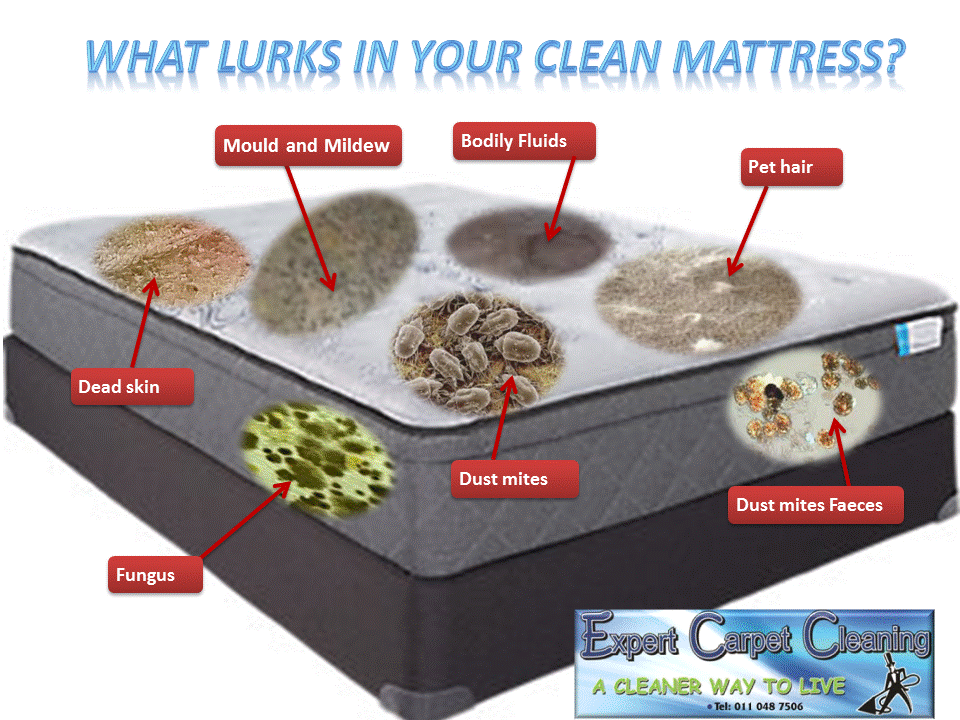
We wear clothes once then wash them. On average sheets are washed every 1 - 2 weeks. Even if your mattress looks clean, it could still be filled with pests, their feces, body fluids and dangerous bacteria.
Sleeping on a clean and hygienic mattress give you total peace of mind when resting at night especially after knowing that you are sleeping on a mattress filled with kilograms of dead skin flakes and dust particles together with millions of house dust mites, crawling in the mattress every night!
A good sleep quality is important to start the day right. In fact studies have shown that a good sleep is important in helping improve our physical health and emotional wellness, that's tantamount to our entire well-being.
Whenever we turn on the bed while we are sleeping, fine dust particles in the mattress is bellowed out into the air which we then breathe in without our realization. We spend an average of 8 hours a day on the bed sleeping, which equates to 1/3 of our lifetime, so it is very important to maintain good indoor air quality in the bedroom. Poor indoor air quality has been blamed by studies for causing many health ailments from as simple as eye and throat irritation to as serious as respiratory diseases, causing common symptoms like sneezing, watery eyes, upper respiratory congestion, fatigue, etc. The Dust mites prime habitat is your bed, they can also be found in bedroom carpeting and household upholstery.
Dust mites and their excrement are one of the most common trigger to common allergy ailments like asthma, rhinitis, eczema. As house dust mites are mainly found in the mattress, it is important to ensure dust and house dust mites are removed thoroughly from the mattress to keep their presence to the lowest. Doctors strongly recommend allergy patients to clean their mattress regularly as it is common for allergy patients to have their worse attacks at night when sleeping because their bodies are reacting to dust and house dust mites from the mattress. So, by minimizing contact to these allergens, one will have less allergy trigger that may cause serious health condition. The main reason for
steam cleaning your mattress is the health benefits. People who suffer from
asthma, eczema and other allergies will benefit greatly. A clean mattress
also promotes a better night's sleep. |
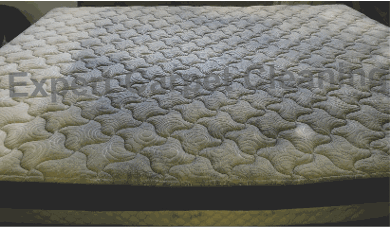
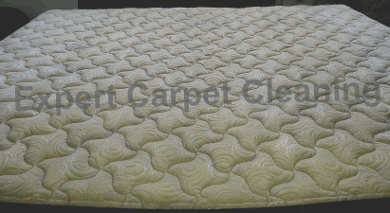
To protect against dust mites and dirt between professional mattress cleaning you can:
* Use a mattress cover
* Vacuum mattress regularly
* Wash bedding regularly
* Clean headboards and night stand
* Vacuum carpet regularly
* Clean windows
* Vacuum / clean drapes
* Dust the room regularly
* Keep dirty laundry contained to one area
* Perform carpet, upholstery and mattress cleaning every 6 - 12 months
Here are some quick facts about dust mites and the dust mite allergy.
- Much smaller than a grain of sand, dust mites are too tiny to be seen with the human eye.
- At least 10% of the human population and approximately 80% of allergy sufferers are allergic to proteins that are found in the waste and decomposed body parts of dust mites.
- If you often wake up with congestion, a runny nose, watery eyes, itching, or sneezing, then you are probably allergic to dust mites.
- A gram (about a half teaspoon) of dust contains as many as 1,000 dust mites and 250,000 allergenic dust mite fecal pellets.
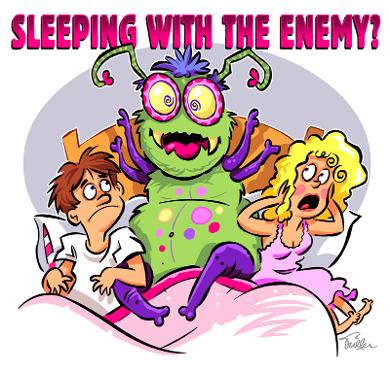
- Dust mite populations increase rapidly. Each egg-laying female can increase the population by 25 or 30 new mites per week.
- Depending on its age, your mattress may house between one million and ten million dust mites.
- During its 80-day lifespan, the average dust mite produces about 1,000 allergen waste particles.
- The weight of the average mattress doubles after ten years due to dust mite infestation, and the weight of the average pillow increases 10% after one year.
The Truth About Dirty Carpets
Carpet Cleaning is somehow considered more of a luxury that a necessity, but not having your carpets cleaned regularly can actually cause health problems.
Most people clean their carpets because they look dirty, although by the time you can see the dirt in the carpets, it's probably filthy. Overtime your carpet can fill up with dirt, dust, mold, dust mites, dust mite feces, hair, dandruff, dead skin, pet hair, mildew, bacteria and just about anything that can stick to shoes as you walk in over the carpets.
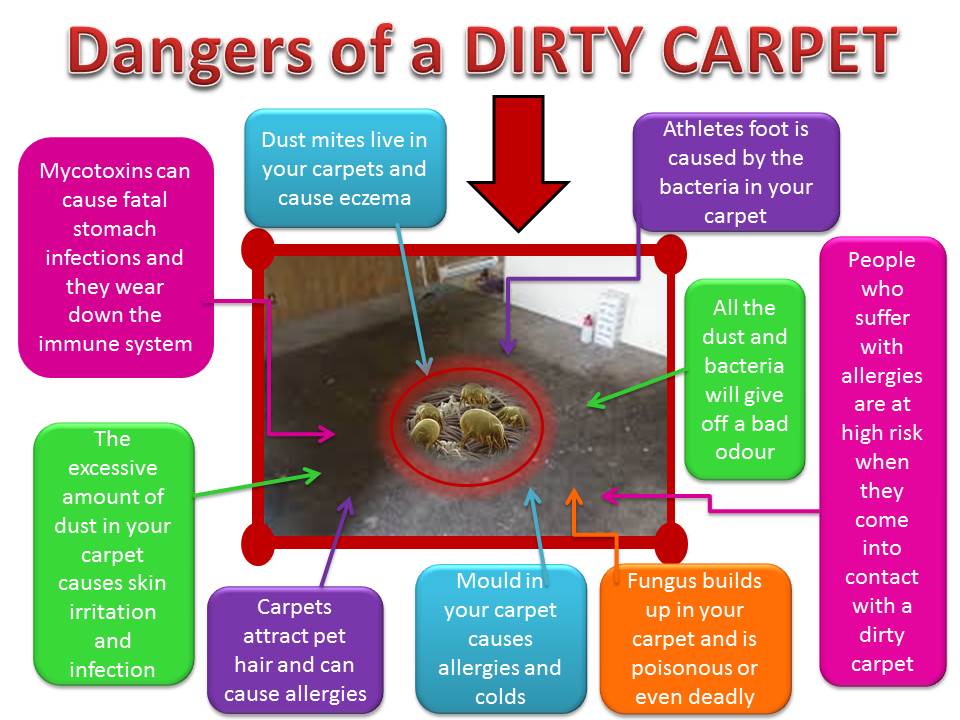
Did you know that indoor air is even more polluted than the air outside? Mainly because indoor air is trapped, it rarely gets completely replaced. Outdoor air on the other hand gets blown away and new, cleaner air replaces it. Another factor is Dirty Carpets.
Dr Michael Berry in his book, "Protecting the Built Environment: Carpet Cleaning for Health", says that most indoor cleaning problems are related to dirty carpets. He compared carpets to a sink that collects pollutants of all kinds from indoors and out. As the sink gets filled up (the carpet gets polluted), it stores more and more soil, dust and contaminants. When the sink gest full, it needs to be emptied.
If a carpet is not cleaned on a regular basis, it can become a breeding ground for bio-pollutants, says Berry. It is crucial to regularly empty the sink and make sure that your carpets are cleaned properly.
A recent study by the Cleaning Industry Research Institute concluded that an organized cleaning program contributed to improved indoor air quality.
At Expert Carpet Cleaning we can help maintain your home's cleanliness, and help you save money on your cleaning bills. Our Mission is to make cleanliness affordable, easily available and a top priority in every home, office and other environment we can reach.

Keeping Cool this Summer
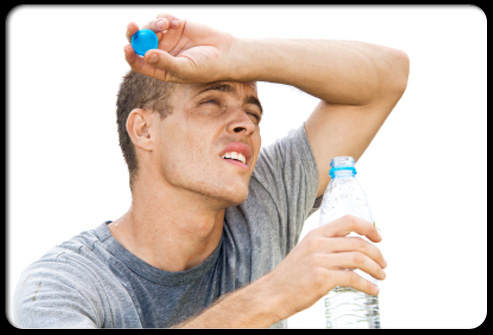
As temperatures soar we look at a few ways to keep your cool in the heatwave.
1. Focus on the temperature in your body, not the house.
· From sipping tasty iced drinks to applying a cold cloth to strong-pulsed areas like your neck and wrists, cooling yourself from the inside out is not a bad idea.
· Spray away the heat - keep small spray bottles filled with water in the fridge and use chilled in the office or car - a fine mist on your face and pulse points (inner elbows, behind the ears and knees) will cool the blood down.
· Wet all your hair, or just all along the hairline in a pinch. The evaporation of the water will cool your head
· Wear natural fiber summer clothing. Wear loosely-woven natural fabrics (cotton, silk, linen) rather than polyester, rayon, or other artificial fibers (with the possible exception of performance fabrics).
· Wear light colors. Darker colors will absorb the sun's heat and stay warmer longer than light or white clothing, which reflects light and heat. Wear natural summer clothing.
2. Close Blinds and Curtains
Inexpensive mini blinds or curtains can work wonders for reducing the sunlight and heat streaming in through your windows. Make sure blinds or curtains are white on the side facing the outside. Solar sun screens and window film are other options that can greatly reduce the heat coming through windows.
Effective shade for east and west windows can also help or hang tightly woven screens or bamboo shades outside the window during the summer to stop 60 to 80 percent of the sun’s heat from getting to the windows.
3. Sleep Cooler
· Put a small pillow in the freezer an hour or two before you go to bed. Put a few plastic shopping bags over it to keep ice from forming on the fabric.
· Crisp cotton sheets breathe easier and will feel cooler as you sleep.
· Keep a glass of ice cold water next to the bed, your body will feel cooler if you are hydrated.
· Keep a spray bottle handy and spray cool mist into the air. You can fill the bottle with fridge water and spray a fine mist onto upholstery, bedding and curtains to cool the air down.
4. Install Cool Lighting
Incandescent light bulbs can significantly heat up a room. Replace standard bulbs with high-efficiency, low-heat or LED bulbs, and turn off lights when not needed.
5. Let the night air in.
During the summer months, temperatures may drop during the night. Make the most of these refreshing hours by cracking the windows before you go to bed. You can even create a wind tunnel by strategically setting up your fans to force the perfect cross breeze. Just be sure to close the windows (and the blinds) before things get too hot in the morning.
6. Cook Wisely
Eat cold meals, cook outside on the grill, or use the microwave for cooking when possible to minimize heat indoors.
When you do cook indoors:
- Cover pots to minimize indoor humidity.
- Turn oven off a few minutes before food is cooked to reduce oven heat.
- Check the oven by turning on the light and looking through the glass, rather than opening the oven door.
7. Make a do-it-yourself air conditioner.
Put a metal bowl filled with ice (or salted ice) in front of a fan, and adjust the fan so that the air is blowing over the ice.
To make salted ice, use one or more 2 liter bottles and fill them mostly full of water (70%) and rock salt (10%). Leave 20% of the volume empty for expansion. The salt lower the temperature at which the water freezes, allowing you to make the ice super cold. Freeze the liquid in the bottles, then place them in a large bowl (to catch dripping condensation). Position a fan to blow on them. As the salty ice in the bottles melts, the air around them cools and the fan will blow that air at you. The water and salt in the bottles can be refrozen every night and used repeatedly.
Soak and ring out some towels and freeze them for about an hour. Now either put it on you or over a blowing fan to make a hot day cooler!
8. Turn Off Electronics
Computers, TVs, and other electronics generate quite a bit of heat when sitting idle or even when turned off, so unplug devices when not in use. An easy way to do this is to plug electronics into a surge protector which has an on/off switch, then turn the switch off when the devices are not in use.
9. Use Fans for Cooling
A paddle ceiling fan or portable fan uses much less energy than an air conditioner, but they’re only effective when you’re in the room to feel the cooling, so turn them off when you leave.
10. Clean Air Conditioner Filters
Your AC filter is getting more use than usual during these heat waves. By changing the AC air filter every month or so during the highest use months allows air to flow easily through your system, making it run more efficiently and saving energy.
11. Put Off Chores
You heard me! Don’t run the dishwasher, clothes washer/dryer, or other appliances during the heat of the day, since these machines generate heat and humidity that will be hard to overcome. Put these chores off until evening when possible.
12. Use Less Hot Water
Turn your geyser down to a lower temperature setting so it will run less and produce less heat.
Hot showers create a lot of excess heat and humidity in the house, so:
- Take shorter showers to reduce humidity and heat.
- Take cool – rather than hot – showers.
Cleaning Tips
Lets start the new year with Fresh, Clean Carpets and Upholstery.
As always Expert Carpet Cleaning is here to assist you with all your cleaning needs and this month we would also like to share a few tried and tested cleaning tips for all those hard to clean areas in your home.
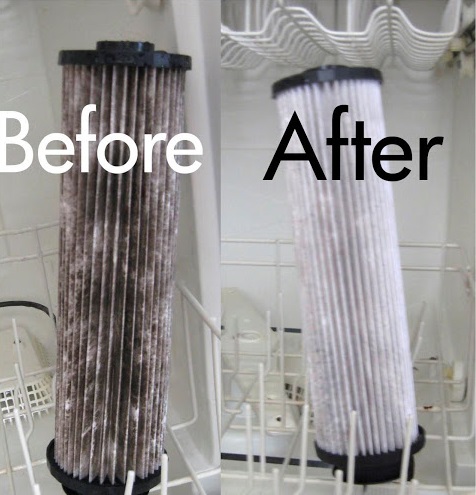
Cleaning A Vacuum Filter
So many more uses for your dishwasher than you can imagine. Vacuum filters can be extremely pricey but if you can get them clean, there’s no need to replace it.
Wash your vacuum filter in the dishwasher with normal dishwasher soaps, then put the filter in the window sill to dry for a day or two. Run the dishwasher empty to clean it once or twice - just in case.
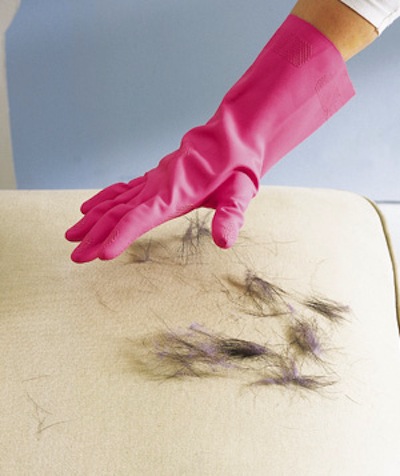
Clean Pet Hair off your Carpet and
Furniture
Use a Squeegee as a quick and easy way to wipe pet hair off of your carpets and rugs and rubber gloves for furniture. Dampen one of your rubber gloves a little, and then use it to remove pet hair from furniture. The damp rubber material is like a magnet to hair.
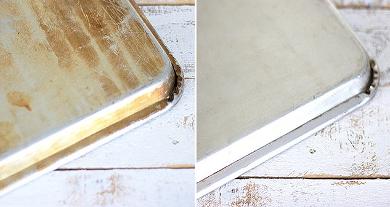
Baking Tray Miracle cleaner
Sprinkle the spot with baking soda, then hydrogen peroxide, then another layer of baking soda. Leave it standing for an hour or two. Rub the cleaner off with cleaning sponge. (minimal rubbing required)
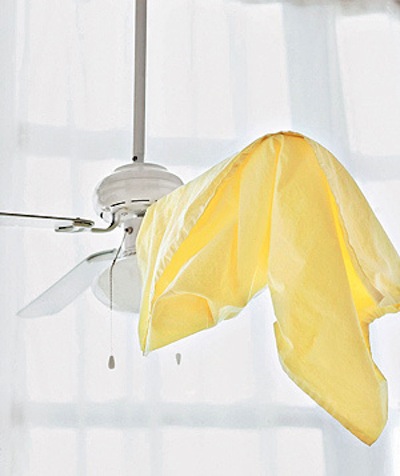
Clean Fan Blades With A Pillow Case
Slide a pillow case onto the blades of your ceiling fans, and then wipe the blades off inside the case. No more dust in your face! So quick and easy, too.
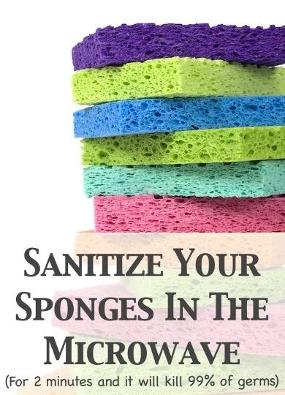
Kitchen Sponges
After a lot of use, your soft kitchen sponges can become pretty nasty. Even when you try to wash them with soap and water, they often have a lingering smell. But you don't have to toss them in the garbage. To clean your sponge, simply pour a little lemon juice into a bowl of water. Then, soak the sponge in the solution and put it in the microwave on high for two minutes.
· Microwave only sponges or plastic scrubbers that do not contain steel or other metals.
· Make sure the sponge or scrubber is wet, not dry.
· Two minutes should be enough to kill most disease-causing germs
· Be careful in removing the sponge from the microwave because it will be hot and should not be handled immediately after.
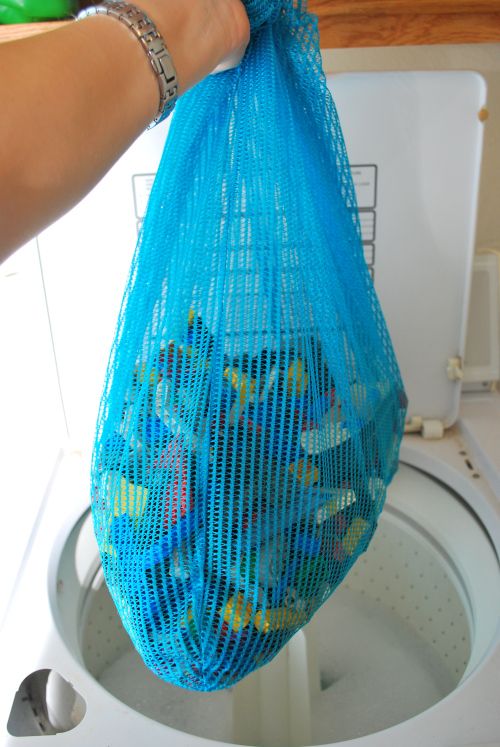
Clean Small toys in Laundry Bag
A laundry bag can make it possible to clean so much more, including small lego pieces! You could also use this concept in the dishwasher.
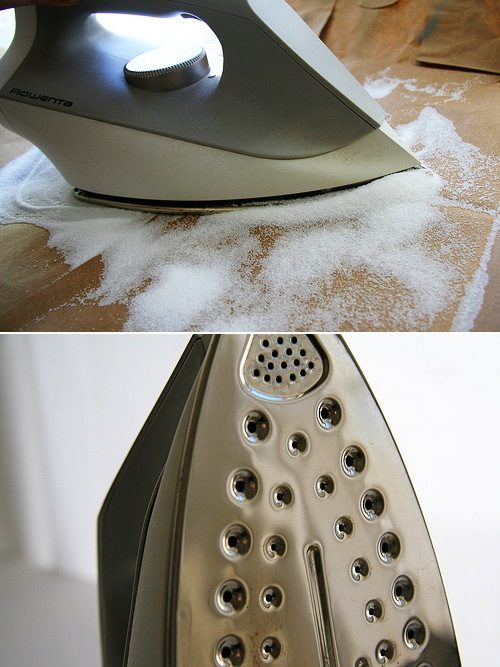
Use Salt To Clean Your Iron
Pour salt on your ironing board (Perhaps cover with a pillow case or something to make clean up easier), and then iron the salt with the steam option off. The dirt on your iron will stick to the salt, making for an easy clean!
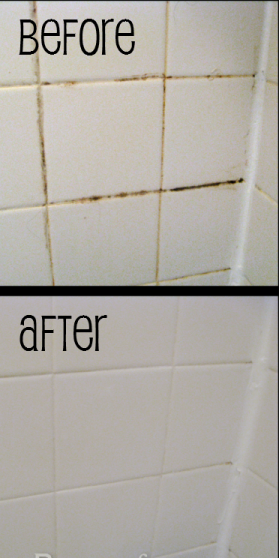
Home made Grout Cleaner
Here’s what you need:
3/4
C baking soda![]()
1/4 C bleach
an old toothbrush or a scrub brush![]()
Mix the baking soda and bleach together in the bowl until it forms sort of a thick paste. Then apply the paste to the dirty grout lines and let it sit for 5-10 minutes.The bleach will do most of the work just sitting there, but after 5-10 minutes, scrub it with your toothbrush to really work the cleaner deeper into the grout.
Wait another 5-10 minutes and then rinse the cleaner off of the grout. If you have a handheld shower head, use that, otherwise just use a damp rag and rinse it out often as you wipe the cleaner away.Remember, grout does sometimes turn darker when it’s wet.
Prepare Your Home for Summer Vacation

It's that time of year when families are gearing up for their summer getaway. You've got your mind on what to pack, booking flights, hotels and planning your itinerary. Before you head out to your sunny destination, follow our handy tips for getting your home ready for you absence. These tips will help you to rest easy while you're away knowing that your house is in order and will make your "back to reality" transition smoother.
Clean the fridge
Toss any food that will expire while you’ll be away or freeze it if possible. Wipe away any crumbs or spills on the shelves.
Tackle the laundry
Coming back to a pile of laundry is not the best way to be welcomed back home. Wash, dry and put away your laundry before you leave so all you have to do is launder the clothes used on vacation.
Tidy the house
By the time departure day arrives you’re so ready for your vacation that you’re tempted to just leave everything as is and deal with it when you get back. As tempting as this is, don’t! You’ll be glad to come home to a clean and tidy house.
- Don’t leave any dirty dishes in the sink or dishwasher.
- Take out the trash.
- Sweep or vacuum floors, dust, and wash the bathrooms. Make sure all toilets are flushed.
- Change your bed sheets so that you’ll have a fresh bed to sleep in.
- Clean out the coffee grinds and wash your coffee maker.
Safety
Set timers on a few outdoor and indoor lights, especially the living room and bedroom to discourage thieves. Make sure your windows are closed to prevent rain from getting in and locked for safety. If you’ll be away for more than week, and don’t regularly use a service to mow your lawn, make arrangements to have your landscaping needs tended to; an overgrown lawn is a huge giveaway that the home is empty.
Unplug your automatic garage door to keep thieves from opening it with a universal remote or getting in by cracking the code. Be discreet about posting that you’ll be away on Twitter, Facebook or any other social media outlet.
Be energy efficient
Unplug your appliances, computers and electronics and other items that are not needed while you are away. According to the Consumer Energy Center, many appliances use power even when they’re turned off.
Unplugging your appliances also protects them from getting damaged during an electrical storm and helps prevent a house fire.
Turn off your central air conditioner or turn the temperature up so you’re not wasting energy.
Lower the temperature on your water heater to a lower temperature. Some units even have a “vacation mode” especially for this purpose.
Miscellaneous Essentials
Make arrangements for your pets; if you’re taking your pet with you or will be boarding him, don’t leave food in his dish.
Have a trusted neighbor or relative water your plants and collect your mail. Ask them to keep an eye on the house for any problems. Pay bills that will be due while you’re away.
Holiday Decorations: Storage Tips
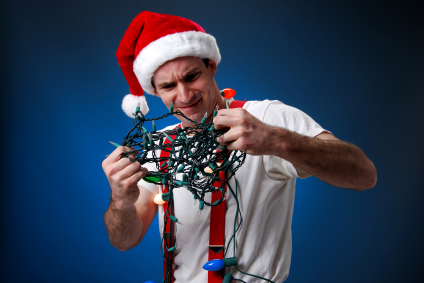
The holiday season has arrived and many of you have already decked your houses with bows, lights, wreaths and a Christmas tree. Nothing can take the joy out of decorating your tree faster than having to deal with unraveling last year’s tangled mass of lights; or opening the box of ornaments and finding some of them broken into tiny pieces. Avoid the hassle and the headache next year with these tips to help keep your decorations neatly organized and safely stored.
- Invest in clear, plastic bins. Cardboard boxes can get crushed easily, especially if they’re stacked on top of each other, or they can get damaged if they’re stored in a damp area.
- Prevent strings of lights from getting tangled by winding each strand around a piece of cardboard cut to fit inside a plastic bin. Store lightly stacked between layers of bubble wrap in bins.
- Store ornaments in containers specifically made for ornament storage. You can also make your own ornament storage container by wrapping ornaments in tissue paper or bubble wrap, and placing them in plastic cups. Store the cups inside a plastic bin. Clean egg cartons also make great packaging for tiny ornaments.
- Label the outside of each bin as specifically as possible. For example, instead of labeling a bin “decorations,” specify the type of decorations: “glass ornaments,” “outdoor railing lights,” “wreaths,” and so on.
- Make a complete inventory list of each container’s contents. Tape the list to the outside of the bin.
- Keep a list of anything that gets broken or needs to be replaced such as a tree stand or string of lights. That way at the beginning of next year’s season you can buy everything you need at once.
- Used gift wrap or crumpled tissue paper can be used as packing filler when you’re storing fragile decorations. You can also run ripped tissue paper through a paper shredder and use it as filler for gift bags.
- Keep parts together. Store your wreath decorations with your wreath hangers and your tree skirt with your tree stand.
- Once you've collected all of the decorations, store them so the first items you decorate with are the easiest to access. If the tree gets decorated first, arrange the bins so the tree decorations are in front
Healthy Christmas Treats
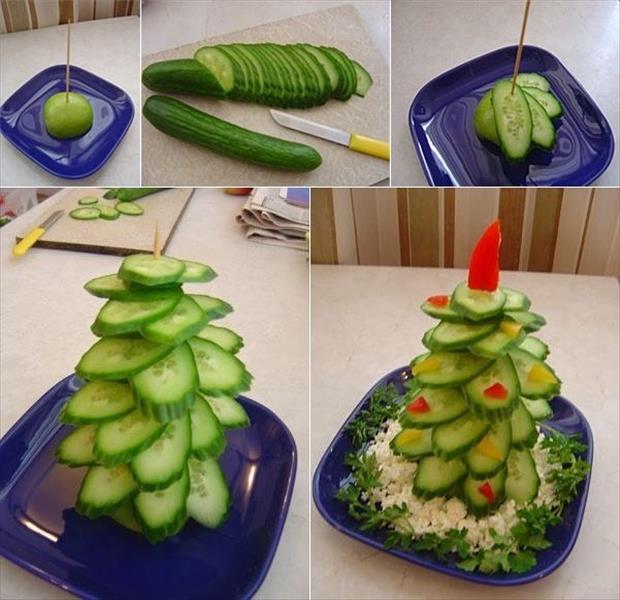
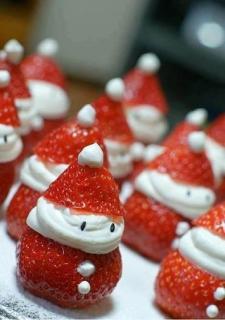

Cleaning up after Christmas Lunch

You put a lot of time, thought and effort into making sure your Christmas lunch is a success. After a day of cooking, baking and entertaining guests, you're ready to put your feet up and call it a day. Unfortunately, as you bid farewell to your last guest, you realize your job isn't done yet! You have a pile of dirty dishes, pots and pans and left overs to contend with.
- A few days before Christmas, clear out your refrigerator and freezer to make room for leftovers. Speaking of leftovers, make sure you have plenty of reusable storage containers (and matching lids) ready to hold the food.
- Bake and cook as much as you can the day before, so you won’t have as much to prepare and clean on the big day.
- Spray pans and tins with a non-stick coating to help eliminate as much stuck-on food and grease as possible.
- Use multitasking cookware that can go from oven to table. Doing so cuts down on using all those serving trays that have to be cleaned later.
- Run your dishwasher and clear it out before guests arrive so it’ll be ready to be loaded after lunch.
- Triple-line your garbage container, so as you fill up and go, you’ll have a new one ready. Leaving mothballs in garbage bins also helps protect against odors.
- Soaking dinnerware and serving trays while you entertain your guests will save you scrubbing time later. If you have a lot of guests, your sink will quickly fill up. Fill a large, plastic storage bin with hot, soapy water instead and hide it in your pantry, or garage.
- While mingling with your guests is your top priority, try to sneak away whenever you can to keep on top of the mess, such as clearing the counters and storing food away.
Once the guests are all gone you have to deal with what’s left to clean. You may be tempted to just turn out the lights, head to bed and deal with the mess in the morning. Don’t! It’ll feel worse facing the mess the next morning.
- Food that needs to be refrigerated needs to be taken care of first. If perishable food has been left out for more than two hours (such as dairy-based dip) it should be tossed for safety reasons.
- When clearing remaining dessert dishes, coffee cups and utensils, do as the pros do it — use an empty bin to load as many items at once. This saves you from having to make lots of trips from the kitchen to the dining area.
- Load the dishwasher with as many small items as possible. It’s easier to have to wash a few larger things, than dozens of smaller things such as utensils, glasses and dessert plates.
- To get rid of lingering odors from cutting boards, rub the surfaces with slices of lemon.
- Those plastic storage containers are notorious for holding on to odors and stains. Get them clean and smelling fresh with a solution of baking soda and warm water to remove odors and stains. Rinse and dry.
Commercial Cleaning Services:

Making use of Commercial Cleaning Services ensures that your premises are professionally cleaned on a regular basis.
Expert Cleaning Services offers its customer contractual cleaning services that caters to their individual needs and ensures that every environment we work in is hygienically clean and safe for all your employees, clients and guests.
If you work in an office, then you will no doubt understand just how important it is to be able to feel as though you’re working in a clean and tidy environment at all times. In the modern world, there is more pressure on office workers than ever to be able to meet deadlines, and for this reason many people are choosing to hire a company who would be able to deal with all of the cleaning needs that an office might have.
A clean business premises will give your customers the correct impression of your company and it is a reflection of the effort and detail that you put into your own products and services. A professional cleaning company has the expertise and knowledge to focus on the small details and keep your premises spotless..
Research has shown that a clean work environment can help prevent health issues, especially for people who have allergies.
Commercial cleaning services generally work around a program that’s been specially designed for the needs of your business. An experienced Area Manager will visit your premises to assess your particular requirements, and then come up with a maintenance plan that best suits your business and budget.
Call our head office today for a free assessment on 011 026 8408
Out Door Furniture Cleaning
Getting your outdoor furniture ready for summer is just another excuse to get outside and enjoy the fresh air. As chores go, it isn’t so bad. All you need is a soft-bristled brush, a hose and cleaning solution to scrub away the winter grime from chairs and tables.
Patio furniture today comes in a wide range of materials, each with a preferred cleaning approach.
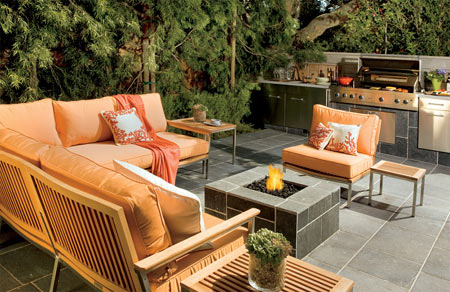
Resin Plastic Furniture: Start by hosing off any loose dirt or other elements. Spray a generous amount of an all-purpose cleaner of your choice and allow it to soak in for five minutes. Gently scrub with your soft bristle brush, hose off the excess product and let dry in the sun.
Soiled Cushions: Many canvas seats and chair backs are removable and machine-washable. Just remember to put the canvas back on while damp to retain shape. Alternatively book a professional cleaning with Expert Carpet Cleaning and consider Scotch Guarding the material to help protect the fabric.
Wood: Use a dry brush or hose to gently remove any dirt or cobwebs from furniture. Using warm water and dish soap, saturate a clean cloth with the soapy mixture and wipe down from top to bottom. Hose off when finished. In really grimy cases you may want to use a pressure washer, but this works best with natural, unpainted wood. High pressure can peel off old and loose paint.
Patio Umbrellas: To protect the exterior coating on an umbrella that repels water and prevents fading, mix a gentle cleanser with warm water. Use a soft-bristled brush to remove dirt and mildew. Tough stains may need a mixture of bleach and warm water but do a patch test, rinse the area and let it dry to ensure the fabric color won’t be affected.
Wicker: Use a vacuum attachment to remove dust and debris between the crevices. To prevent damage, do not drench the wicker. If using a hose to gently rinse off afterwards, dry immediately with cotton towels or cloths.
Cast Iron: Mix together 2-to-3 teaspoons regular dish soap with four liters of lukewarm water. Use a sponge or soft-bristled brush to remove any dirt or other hangers-on. Apply solution as needed and rinse with a garden hose. Dry quickly with clean cloths or towels.
Still don't think you're ready for your next party? Call Expert Carpet Cleaning on 011 026 8408
Keep Allergens away this Spring:
During Spring, allergies are notoriously pesky including itchy eyes, sneezing and blocked, itchy or runny nose.
Did you know that indoor air is even more polluted than the air outside? A recent study by the Cleaning Industry Research Institute concluded that an organized cleaning program contributed to improved indoor air quality.
Here are some tips to help control Allergens:
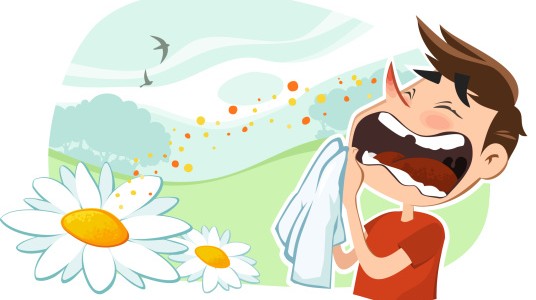
Follow Dusting Dos and Don'ts
One of the best ways to control indoor allergens is by getting rid of dust. That's because dust mites — the most common trigger of asthma and allergy symptoms inside the home — thrive in dust. But be aware that dusting can actually make things worse by kicking up allergen particles into the air. Use a damp or treated cloth that attracts dust rather than scattering it, and consider wearing a dust mask when cleaning. Also, try to minimize clutter in your home, since it tends to collect dust.
Clean Rugs and Carpets:
Your Carpets and Rugs could be home to a variety of allergens including dust, dirt, Pollen, Pet dander, Fur and Dust mite feces. Have your Carpets, Rugs, Upholstery and Mattresses professionally cleaned at least twice a year.
Vacuum to Reduce Allergens
Vacuuming — especially in areas that accumulate more dust, such as carpeting, mattresses, pillows and furniture — can help control allergens in your home. But as with dusting, vacuuming can also send dust particles into the air and cause problems for anyone with a dust mite allergy. Use a vacuum with a HEPA filter, which can trap small particles and prevent them from spreading into the air. Try to vacuum at least once or twice a week.
Wash Away Allergens
Dust mites tend to thrive in bedding, pillows, and throw rugs. And since we spend so much of our time in the bedroom, it's especially important to reduce allergens there. At least once a week, wash pillowcases, sheets, and blankets in very hot water — at least 130 degrees — and dry them in a hot dryer to kill dust mites. Also, encase mattresses and non-washable pillows, comforters, and other bedding in allergen-proof covers.
Reduce Pet Dander
The protein found in the saliva, urine, and dander (dead skin flakes) of our furry friends is a common allergen for many people. These allergen particles can become airborne and trigger symptoms in those who are sensitive. You can reduce animal dander by vacuuming frequently and washing your pet at least once a week. Other measures you can take include keeping your pet out of your bedroom and off the furniture and designating certain areas of the house as pet-free zones.
Keep Pollen Out
To prevent pollen — a potent allergen — from entering your home, keep your windows and doors closed, especially at night. Try to avoid going outdoors in the early morning hours, between 5 a.m. and 10 a.m., when pollen is usually emitted from plants. Avoid being outside in general when the pollen count is high. Changing your clothes and taking a shower when you come home may also help get rid of any pollen you may have picked up while outdoors. Finally, don't hang laundry to dry outside since pollen and molds can collect on them.
Use Humidity Controllers and Air Purifiers
Finding the right level of humidity in your house is important. Allergen particles, such as animal dander, are more likely to fly around if there's too little moisture. Too much moisture, and you could have a problem with mold and mildew. Depending on the conditions inside your home, use either a humidifier or a dehumidifier as needed to keep the humidity at about 40 percent. During warmer months, run your air conditioner, which will also help control mold and dust mites by reducing humidity. Air purifiers may not be as effective in reducing allergens in the air as other management methods, but if you do use one, try an air purifier with a HEPA filter.
Rug Care
Rugs warm and add color, pattern, and texture to a room. You can easily change a room's look and feel from one season to another by replacing the rug.
Rug care is determined by size, construction, and material. When requesting quotes on cleaning a rug, it is important to have this information available.
Outlined below are care tips for several common type rugs:
· Vacuum regularly on both sides of rug. Remove the rug occasionally to vacuum the floor. - If possible, take the rug outside and gently beat it to loosen dirt trapped between the fibers.
· If the rug sustains heavy traffic, have it professionally cleaned twice a year; rugs in other locations can be cleaned annually.
· When storing a rug (especially a heavy winter one), have it professionally cleaned and wrapped before storing in a climate-controlled area to avoid damage.
· When you purchase a new rug, keep the care tag intact, or file it with your household maintenance and furnishings file for later reference.
· Care for large size room rugs as you would wall-to-wall carpet. Fine Oriental rugs and other unusual materials, however, require special care.
· When pet hair accumulates in a rug, brush the rug vigorously with a stiff clothes brush or utility brush. Brush with the nap until dirt and hair cease to come out. Treat pet stains as soon as possible to avoid permanent damage.
· Rotate rugs to ensure even wear; direct exposure to sun will cause fading.
· Some natural fiber rugs are constructed in squares that are sewn together. Buy a few extra squares or a smaller size of the rug. If a rug square is stained, clip the threads that hold it in place, replace with a new square, and hand-stitch with heavy-duty carpet thread.
Buying a New Area Rug
There are many factors that plays a roll in buying a new rug for your home, the last one you’d ever consider is the cost of cleaning the rug in a few month.
In some cases the cleaning will most likely cost more than the rug itself, this is especially true for natural fibre rugs that will require dry cleaning. The cost of the chemicals for dry cleaning alone will let you re-think the purchase.
If you need a rug that is used for a floor-covering or just a decorative addition to your home, and you know you will replace it in a few years – then buy a synthetic rug.
For a longer lasting look and feel, woven wool rugs as well as high quality oriental rugs should be considered.
Rugs that are expensive to clean:
Sea grass / Sisal / Jute / and Leather strap Rugs: First of all, these rugs will require dry cleaning which in itself is not very effective.
The problem with sisal and jute, besides the fact that they feel like wicker furniture instead of a soft rug, is that they both release oil when wet, yellow, and get brittle with age.
Some even claim to be stain resistant. Anyone who’s ever spilled on one of these rugs will tell you a different story. When a spill gets on it, and oils from the plant fibers release, it makes darker areas that can be tough or even impossible to get out. And if the owner of the sisal rug has pets, and the spill is pet urine, the rug cannot be soaked to remove the contaminants because the cloth border binding may shrink, or the rubber/latex backing may have structural problems. To be safe with sisal, you need to use it in areas where you don’t feel there will ever be any spills, and no pets. And you just need to know that if you have a spill disaster on the rug that you may have to replace the rug.
Another problem with the Plant Fiber rugs are that one layer or dirt will mask any discoloring and pre-existing conditions. You might not notice the discoloring happening when the spill occurs, but once the top layer is dry cleaned your can notice permanent stains and marks that seems to have appeared out of nowhere.
With jute, when it gets wet it likes to yellow and brown badly. For some strange reason, jute is being used as a foundation fiber on many of today’s lesser quality rugs.
Chunky wool and Shaggy rugs:
There are many shag type rugs out in the market today and they are far and away the most difficult rugs to clean and maintain. That’s because there is a lot of additional hand work needed to try to clean what gets embedded in the fibres of these rugs.
Sick Building Syndrome
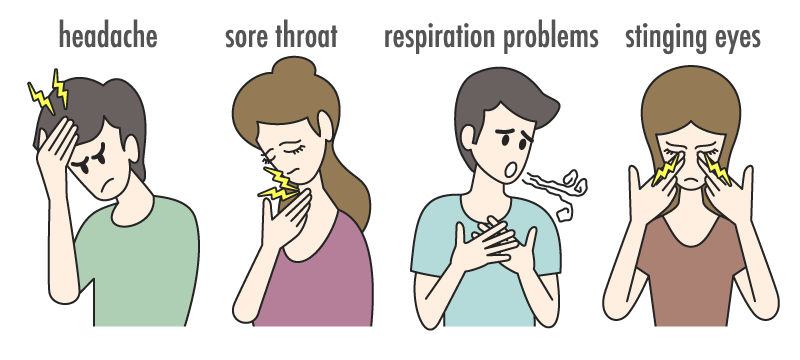
A healthy workforce is a productive workforce
What is sick building syndrome?
This is the name given to the phenomenon when people who regularly occupy a building (home or office) experience various troublesome symptoms, mainly when they spend time there.
The symptoms tend to be flu- or allergy-like, and may include headaches, burning or itching eyes, stuffy nose, sneezing, coughing, sore throat, tight chest, dry or itchy skin, dizziness, difficulty concentrating, nausea and fatigue.
This is a very controversial subject because it’s difficult to definitively link the wide range of symptoms people experience to a recognized illness, or to identify a specific cause. Nonetheless, there are some well-established prime suspects.
The syndrome is thought to be the result of poor indoor air quality, caused in turn by inadequate ventilation, faulty or poorly maintained air conditioning systems, and a wide array of indoor chemical pollutants. Indoor air pollution can occur in any building, but is particularly common in modern office blocks, which often have sealed windows and ventilation systems that re-circulate much of the interior air.
What can be done to combat sick building syndrome?
Once off cleaning of the entire building will be a good start.
The carpeting might also require cleaning if you keep in mind that a carpet does not have to look dirty to be full of dust and toxins that it filters out of the air.
- · Take care of your office plants - dusty, dying plants don't do anything for the air quality in your office, and over- watered plants can develop mold. Healthy plants remove chemical vapors and toxins from the air.
- · Check the general cleanliness of the building, including checking that the vacuum cleaners are working properly and are regularly emptied and their filters are clean.
- · Don't block air vents or grilles.
- · If you must smoke, do it outside and far away from the fresh air intake ducts, and comply with your company's smoking policy.
- · Get rid of garbage promptly to prevent odors and biological contamination.
- · Store food properly. Keep perishable food in the refrigerator, and clean the refrigerator out frequently to prevent odors and mold.
- · Keep eating areas clean to avoid attracting pests.
- · Check the operation of the heating, ventilation and air-conditioning system. In particular, the system that supplies fresh air should be checked.
- · Check the condition and cleanliness of air filters, humidifiers, de-humidifiers and cooling towers.
Areas in your home you’re not vacuuming but should
The powered vacuum cleaner was invented in 1901 by Hubert Cecil Booth, an engineer from England. Thanks to Mr. Booth’s invention, people have been vacuuming up dirt, dust, pet hair, crumbs, and other messes for 113 years and counting. The vacuum has come a long way since its early beginnings. Whether you own an upright, canister, cordless, bagless, robotic, or central vacuum, your trusty vacuum is an important ally in your fight against a dirty house. Vacuums do a stellar job at getting floors and carpets clean, but did you know that vacuums can also tackle other dirty areas in your house? Here are some areas in your home that you’re not vacuuming but should.
Computer Keyboard
Your computer keyboard falls under the category of “most neglected” when it comes to cleaning. If you’re like the average person, you’re tapping away at your keyboard daily — sometimes for hours at a time. Keyboards are notorious for getting dirt, dust, food particles, and other tiny items stuck in between the keys. Your vacuum is a great way to grab all those little particles. Just be sure none of your keys are loose before going near them with a vacuum.
Drawers
You may not think about vacuuming inside your drawers, but you’d be surprised at just how much dust can be found inside a closed drawer. Take some precautions before you aim your vacuum nozzle inside your drawers to prevent accidentally sucking up items (socks, pens, coins, etc.) in the process. The pros suggest stretching a pair of nylon stockings over the nozzle. The stocking will allow dust to get through while preventing other objects from getting sucked up.
Dryer Lint Chamber and Vent
Your dryer’s lint chamber and exhaust vent can never be too clean. In addition to making your dryer run less efficiently, resulting in wasted energy, excess lint buildup can lead to a fire.Vacuum the lint from inside your dryer as well as lint that accumulates in the exhaust vent. Consult your dryer’s user manual for tips on how to properly and safely clean the lint from your dryer as well as how often you should clean your dryer.
Foam Pillows
Foam pillows offer great head and neck support and ensure a good night’s rest, but they pose a problem when it comes to cleaning them. Foam pillows can’t be washed in the washing machine like a feather or cotton/polyester fiberfill pillow can. To get rid of dust mites, skin cells, and dirt, vacuum them often — preferably once a week.
Mattresses
Just like pillows, mattresses are magnets for dirt, dust, and dust mites. How often should you vacuum them? Experts suggest you vacuum your mattress every six months. The next time you flip your mattress (experts suggest flipping your mattress every six months), vacuum the top, sides, and inside the crevices of your mattress.
Heating and Air Conditioning Vents
Heating ducts and air conditioning vents do a great job of circulating warm and cool air throughout your home. But if they haven’t been cleaned in a while, they’re also circulating unwanted dust and dirt throughout your home. Using a soft-bristled brush attachment, go over the slats of your vents as part of your regular vacuuming routine.
Refrigerator Coils
Refrigerator coils (also called condenser coils) play an important role in helping to keep your refrigerator cool. Coils can be found in the back, top, or bottom of your refrigerator. When the coils get clogged with dust, dirt, and clumps of pet hair, they force your refrigerator to work overtime. This adds unnecessary strain on your refrigerator. Always unplug your refrigerator first and consult your user manual for safety and cleaning suggestions.
Window Blinds
Window blinds come in an array of materials, styles, and designs, but they all share one thing in common: they love to collect dust. While regularly running a microfiber cloth or soft cloth is the best way to clean minor dust buildup, Bobvilla.com suggests using a small brush attachment to tackle heavier dust. For best results, go over the blinds in the direction of the slats on the lightest setting to avoid damaging delicate slats.
Brooms
Using a dirty broom to sweep your floors is counterproductive. Before putting your broom to use, run the nozzle of your vacuum over the bristles to remove stuck-on dirt and hair.
DUST MITES
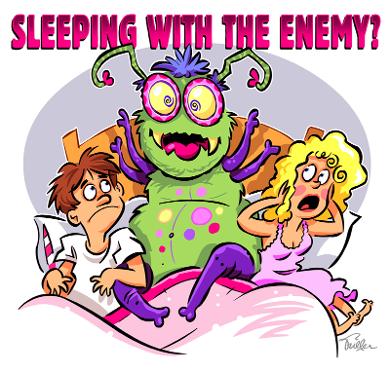
The Dust mites prime habitat is your bed, they can also be found in bedroom carpeting and household upholstery. Autumn and winter months we close up our houses and the concentrations of dust mites and their feces increase inside our home. In the spring, pollen aggravates allergies and dust mite infestations makes it worse.
We spend an average of 8 hours a day on the bed sleeping, which equates to 1/3 of our lifetime, so it is very important to maintain good indoor air quality in the bedroom. The main reason for steam cleaning your mattress is the health benefits. People who suffer from asthma, eczema and other allergies will benefit greatly. A clean mattress also promotes a better night's sleep. |
To protect against dust mites and dirt between professional mattress cleaning you can:
* Use a mattress cover * Vacuum mattress regularly * Wash bedding regularly * Clean headboards and night stands * Vacuum carpet regularly * Clean windows * Vacuum / clean drapes * Dust the room * Keep dirty laundry contained to one area * Perform carpet, upholstery and mattress cleaning every 6 - 12 months |
Here are some quick facts about dust mites and the dust mite allergy.
Much smaller than a grain of sand, dust mites are too tiny to be seen with the human eye.
At least 10% of the human population and approximately 80% of allergy sufferers are allergic to proteins that are found in the waste and decomposed body parts of dust mites.
If you often wake up with congestion, a runny nose, watery eyes, itching, or sneezing, then you are probably allergic to dust mites.
A gram (about a half teaspoon) of dust contains as many as 1,000 dust mites and 250,000 allergenic dust mite fecal pellets.
Dust mite populations increase rapidly. Each egg-laying female can increase the population by 25 or 30 new mites per week.
Depending on its age, your mattress may house between one million and ten million dust mites.
During its 80-day lifespan, the average dust mite produces about 1,000 allergen waste particles.
The weight of the average mattress doubles after ten years due to dust mite infestation, and the weight of the average pillow increases 10% after one year.
Where Flu Germs Lurk
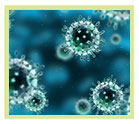
The telltale sounds of winter are in the air — coughing, sneezing, and sniffling. Trying to avoid catching the flu takes a lot of effort on your part — you constantly wash your hands, keep a safe distance from anyone who is sick, avoid touching your eyes, nose and mouth, and carry an arsenal of germ-killing hand sanitizer. While all these steps are important, one more step is necessary in the ongoing battle of the flu — getting rid of flu germs that lurk on surfaces throughout your house.
Battle Plan
While getting the flu vaccine every year is the first line of defense against catching the influenza virus, there are other preventive cleaning steps you can take to ensure you stay as healthy as possible this winter. The following cleaning list also is effective in preventing other viruses not covered by the flu vaccine, such as cold and stomach viruses. Influenza A and B viruses can live on a surface for hours to days. That means it pays to be extra vigilant when it comes to cleaning and disinfecting during flu season.
Here’s how to win the battle:
- When it comes to zapping flu germs, you must disinfect surfaces, not just clean them. Cleaning physically removes dirt and germs, while disinfecting kills germs.
- It’s important to ramp up your disinfecting routine during the flu season even before someone in your home comes down with the flu. That’s because according to the Centers for Disease Control and Prevention (CDC), people may be able to spread flu germs to other people one day before coming down with any symptoms. The flu continues to be contagious five to seven days after becoming sick.
- Clean surfaces first to remove excess dirt, crumbs, etc. Follow by disinfecting.
- When cleaning surfaces touched by a sick person, use disposable paper towels instead of sponges and dishcloths.
- Disinfect surfaces that are routinely touched — doorknobs, light switches, remote controls, cabinet pulls, and electronic devices.
- Clean and disinfect bathroom surfaces daily. Don’t neglect forgotten areas such as the toilet handle and medicine cabinet door or handle.
- Avoid storing toothbrushes together and don’t use the same toothpaste as someone who is sick. Use paper towels or assign each family member their own hand towel to use after washing their hands.
- Launder bed linens and blankets often during the winter months, especially the sheets of those with the flu. Wash and dry on the hot setting. When removing soiled linens, avoid having them come in contact with your clothing. Hugging a heap of laundry close to your body gives you a higher risk for contamination. Don’t forget to wash your hands immediately after handling dirty laundry.
- If a member of your household has the flu, try to contain them to one room as far away from the common living area as possible. The same goes for bathrooms; if possible, designate one bathroom to be used by the sick person. It’ll be easier to stay on top of the germs if they’re confined to one area.
Keeping your home flu-free takes extra work on your part, but it’s worth it.
Ways to Disinfect and Keep Your Home Germ-free This Flu Season
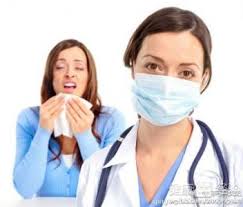
Winter is quickly approaching and along with the cold temperatures, it brings along with it an unwelcome guest — the flu. Don’t sit back and wait for the inevitable to happen, take a proactive approach to flu prevention. Besides covering your mouth when you sneeze and cough, washing your hands often and staying clear of anyone who is sick, the following are tips on how to slow the spread of flu specifically through cleaning and disinfecting.
Clean and disinfect surfaces and objects that are touched often
Most studies have shown that the flu virus can live and potentially infect a person for 2 to 8 hours after being deposited on a surface. According to the Centers for Disease Control and Prevention (CDC), flu viruses are relatively fragile, so standard disinfecting practices are sufficient to remove or kill them. It’s important, however, to know that cleaning and disinfecting isn’t the same thing. While cleaning surfaces with a general household cleaner (such as soap and water) REMOVES germs, you need to use a disinfectant to KILL germs.
While it’s impossible to get rid of every last germ, try to disinfect surfaces and objects that are touched often, such as desks, counter tops, doorknobs, light switches, computer keyboards, faucet handles, phones, toys and even backs of kitchen chairs. Always carefully follow label directions on cleaning products and disinfectants. When using disinfecting wipes, for example, it may be necessary to use more than one wipe to keep the surface wet for the stated length of contact time. Also, before using on electronics make sure that the electronics can withstand the use of liquids for cleaning and disinfecting.
To make your own disinfectant solution do the following:
- Add 1 tablespoon of bleach to 1
quart (4 cups) of water.
For a larger supply of disinfectant, add ¼ cup of bleach to 1 gallon (16 cups) of water. - Apply the solution to the surface with a cloth.
- Let it stand for 3 to 5 minutes.
- Rinse the surface with clean water.
Routinely wash eating utensils in a dishwasher or by hand with soap and hot water. Wash and dry bed sheets, towels, and other linens as you normally do with household laundry soap, according to the fabric labels. Eating utensils, dishes, and linens used by a sick person don’t need to be cleaned separately, but they obviously should not be shared unless they've been washed thoroughly.
There’s no need to panic this flu season. By routinely disinfecting areas in your house, you can help keep the germs to a minimum.
Q: How can I tell if a
household cleaning product kills germs? A: Look for the words
"disinfect," "disinfectants," "antibacterial," or
"sanitize" on the label.
Q: How many bacteria does it take to make people sick?A: It's difficult to provide the exact number. The bacteria consumed, the more likely illness will occur. For some, it takes as few as 10 bacteria to get sick. For others it can be millions. To minimize the risk of geeting sick, wash your hands frequently an ddisninfect surfaces on a regular basis.
Q: What’s the difference between plain soaps and antibacterial soaps used in the home?A: Antibacterial soaps contain a special ingredient for controlling germs. When washing with and antibacterial soap, a very small amount of antibacterial ingredient is deposited on the skin that keeps the number of germs at a significantly reduced lever for an extended period of time. Washing with plain soap initially removes some germs, but the germs left on the hands can quickly re-grow and increase in number.
Spring has Sprung...
There's a fresh scent in the air, the birds are sweetly singing and the warm air is giving you renewed energy. The idea of tackling spring cleaning somehow doesn't seem as daunting when the weather turns nice.
Of course this is a good time to get a little professional help with carpets, upholstery, curtains and even mattresses! Our experienced teams can also wash Windows, Kitchens, Bathrooms, deep Clean Showers and Tiles.
Here is just a few fun tips to help organize your cleaning schedule at home:
Take inventory of gardening supplies and
plants that survived winter. Create a
nursery shopping list and enjoy spring!
Clean and store winter tools and sports gear. Make warm-weather gear more accessible.
Pack up heavy winter clothes in pest-proof bags and containers.
Donate winter clothing you didn't wear this season. You won't wear it next year either.
Toss all expired food and clean the shelves.
Empty the freezer and make sure to label and date each food item. Throw out anything more than 6 months old.
Wash winter sheets, blankets and comforters. Use vacuum bags or containers for airtight storage.
Donate magazines and books you've read to the charity shops or senior centers.
Cleaning Tips for Pet Owners
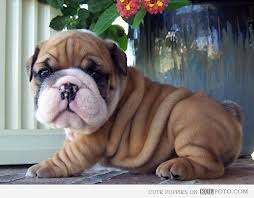
Pets bring a lot more than love into a home…
Pet owners know the cleaning challenges a pet can create. Between shedding hair, pet dander and the occasional "accident," pet owners have their work cut out for them. On top of that animals may roam inside and out bringing a lot more than love into your home!
Keeping a house clean when you have pets isn't harder, it just has different requirements. A little pre-planning, training and grooming will help ensure you have taken the necessary steps to maintain a clean house.
Expert Carpet Cleaning would like to offer some cleaning tips for all our pet owners:
- Animal allergens are sticky so you must damp wipe the walls and woodwork to remove it.
- To keep possible messy areas in check, put a place mat under animal food dishes.
- Use washable slipcovers over furniture pets prefer. Make sure to use water temperature greater that 130 degrees to kill allergens and other bacteria.
- If you allow pets on beds, bedding must be washed at the same high temperature at least every two weeks. Always wash sheets and slipcovers separately to keep hair from migrating to other fabrics.
- When it comes to removing pet hair from draperies, carpets and upholstery, the vacuum is not always your best weapon. Use a rubber latex glove, wet or dry, to do the job because hair will cling to it. In addition, check out vacuum attachments with rubber strips that have the same effect as the glove.
- Alternatively, buy a small plastic rake and rake the carpet before vacuuming.
- Step into the future, invest in a robotic vacuum that can tackle all floor surfaces.
- In addition to vacuuming, it is important for pet owners to steam clean carpets and upholstery periodically.
- Forced-air heating and air-conditioning can spread allergens through the house so change filters frequently.
- Put a plastic bag in the bottom of your litter tray and the litter on top. Scoop out the little “jobs” as they happen to keep smell at bay and when it’s time to clean the whole litter pan, simply grab the bag, keeping the contents inside.
There are areas in your home that you consistently clean as part of your regular housekeeping routine. You tackle the places that get the dirtiest and grimiest — you dust the furniture, vacuum the carpets, disinfect the toilets and wash the kitchen floor. Yet, even for the most meticulous cleaner, there are those places in the home that somehow get overlooked and never, or rarely, get cleaned. Many of these places such as the tops of refrigerators or ceiling fans fall into the “out of sight, out of mind" category. Since they are higher-up and not in plain sight, you forget about them. Other items such as your shower curtain liner and dishwasher don’t get cleaned because you never thought it was necessary. Neglecting these unseen or forgotten spaces from getting their fair share of cleaning is not only unsightly, but can be hazardous to your health. The following are some of the top places people forget to clean and tips on how to dust, clean and disinfect them.
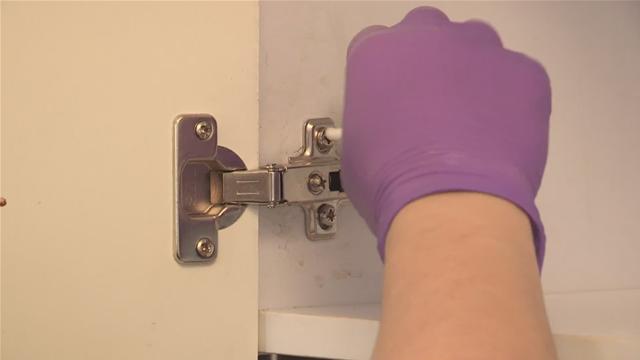
Remote Control
According to a study conducted by the researchers at the University of Virginia, the remote control is one of the top places to transmit infections in your home. Everyone in the house handles the remote control, yet it almost never gets disinfected. To banish the germs, disinfect your remote control by wiping it often with a disinfecting wipe.
Behind the Refrigerator
Even though no one is ever going to see behind your refrigerator, it is important to get back there a few times a year to remove the dust, crumbs and food particles that can accumulate and get trapped there. Food particles left behind can attract unwanted critters as well as mold. You’ll be amazed what you find when you slide your refrigerator out. A simple vacuuming and a mopping should get the area clean.
Refrigerator Coils
The coils on your refrigerator dissipate heat from the refrigerator, so if they’re clogged with dirt and dust your refrigerator won’t work to its full capacity. By vacuuming the coils a few times a year, you can save energy and money. Be sure to read the owner’s manual of your refrigerator for specific tips and instructions.
Tops of Large Pieces of Furniture
The tops of large pieces of furniture such as entertainment centers and china cabinets are rarely, if ever, dusted. Years of dust and grime can accumulate in these areas. To minimize the build-up, dust them at least once a month.
Salt and Pepper Shaker
Before refilling your salt and pepper shakers, do you wash them in hot, soapy water, or put them in the dishwasher? If you said no, you should. According to a study by the University of Virginia, cold and flu viruses can often be found on the surfaces of shakers. Don't just refill your shakers once they're empty, sanitize them in the dishwasher. Use disinfectant wipes to clean the surfaces between washes.
Toilet Roll Holder and Toilet Handle
It’s no surprise that the bathroom is one of the germiest rooms in the house. In addition to the toilet, bathtub, shower, floor and sink, do not forget to disinfect the toilet roll holder and toilet handle. When flushing, toilet water can easily be sprayed around the area. Think about how much bacteria has collected with every flush, not to mention how many hands have come in contact with the toilet roll holder and toilet handle. Disinfect the entire toilet paper holder and toilet handle with a sanitizing wipe or clean with a solution of water and bleach often.
Shower Curtain Liners
Vinyl shower curtain liners get wet every day, and stay wet for long periods of time, making them the perfect habitat for mold and mildew to thrive. Thoroughly cleaning with disinfecting wipes or a bleach and water solution once a week will help prevent the growth of mold and mildew. Most vinyl curtain liners can also be laundered in a washing machine according to the label instructions.
Light Switches and Door Knobs / Cupboard doors and hinges
You touch, turn and switch on-and-off the light switches and door knobs in your home countless times a day. Yet, how often do you wipe these areas clean to remove spots and germs? To help keep germs at bay, wipe them often with disinfecting wipes. Clean them more often during the cold and flu season.
Ceiling Fans
Ceiling fans are notorious for collecting layers of dust and grime. People often forget to clean the blades on their ceiling fan and don’t realize the accumulation of dust until they turn the fan on when the weather gets warm. Dirty ceiling fan blades aren’t just unsightly, when dust sits around, dust mites can move in contributing to allergies.
Dishwasher
It might sound strange, but your dishwasher needs a cleaning from time-to-time. Contrary to popular belief, the dishwasher doesn’t clean itself each time you wash a load of dishes. Food particles can get trapped in the crevices of your dishwasher causing unpleasant odors. Clean and sanitize your dishwasher by placing a cup of white vinegar into the dishwasher and running it on empty for one cycle. Do this once a month for a fresh-smelling dishwasher.
Indoor Garbage Can
Traces of food and liquid sometimes leak through trash bags and become a breeding ground for mold, mildew and bacteria to grow, causing a terrible stench. Mold and mildew can also get into the air and exacerbate allergies. Clean your garbage can with a solution of water and bleach or other disinfecting cleaner as often as needed.
Window and Door Tracks
When it comes to window cleaning, we often focus on cleaning the windows but forget about the tracks. Use an old toothbrush and a cleaning solution to remove the grime.
Keep Painted Walls Looking New
Washing you walls makes your entire house look cleaner and it's a great way to extend the life of your paint, saving you money. A good cleaning every once in a while can keep your walls looking bright, clean and fresh.
First assess what type of paint your walls are covered with. Always test in an inconspicuous spot before just washing the entire wall. Semi-gloss and glossy enamel paints tend to stand up best to washing. Flat, satin, and eggshell latex paints, on the other hand, may fade or rub off with overly abrasive cleaning.
Dusting
Run the dust brush attachment of your vacuum over ceilings and walls. You’ll want to remove as much dust and cobwebs as you can, often this is enough to get your walls looking clean.
Prepping
Be sure to lay down old sheets or canvas drop cloths to catch soapy drips and to protect your floors. You’ll also need two buckets — one for cleaning and one for rinsing.
To avoid stripping or causing fade spots on the paint, always start with the gentlest materials possible — in this case, water and natural sponges. Avoid using colored sponges since the dye can be deposited onto lighter-colored walls. When water isn’t enough to remove stubborn stains, a mixture of warm water and mild detergent should get the job done.
Get Cleaning
Start at the bottom of the wall working your way up, alternating between the wet, soapy sponge and a wet, clean sponge to rinse; each sponge should have its own bucket. Rinsing with clean water is essential to prevent soapy residue from being left behind. Rinsing also ensures that any new dirt and grime won’t cling to the soapy residue left behind.
Rub in a gentle, circular motion and make sure to wring out the sponges well to avoid drips. Work in sections, and once you’ve completed a section, dry the area with a clean, soft cloth.
If you need to take a breather, never stop for a break in the middle of washing a wall. Stopping the job before you finish the entire wall can cause "wash marks": a wave effect caused by stop-and-go wall washing. Always wash an entire wall in a single session.
Prevention tip: Always try to clean a spot or remove a stain promptly. The longer a stain stays stuck to the wall, the harder it’ll be to scrub off later. For spot-cleaning, try a paste of baking soda and water gently rubbed over the stain, then rinsed with clean water and dried with a soft cloth.
Upholstery and Your Family: Be Clean, Be Beautiful
Every day, you and your family come in from outside and go immediately to the furniture. Often, it's raining or your kid has come home from a sweaty soccer game or rugby practice, or maybe you've spent all day at the office surrounded by other people. Over time, germs, dirt, sweat - everything from ticks to swine flu - will build up on your upholstery Many people do not get their upholstery cleaned nearly enough, if at all. Basic home care should include upholstery cleaning at least once a year. It will contribute not only to the health of your home but its beauty as well.
